The Gondola's Voyage
A voyage in 72 days : every day, we visit a new islet of Venice. I have selected 72 islets out of the 106 that compose the insular town of Venice, the rialtine Venice (without Mestre and the other islands of the lagoon : Murano, Burano, Torcello...). 72, like the number of parishes mentioned in the XVIIIth century by Casanova and Montesquieu.
BLOG ARTICLE
Emeric Cristallini
5/30/202516 min read
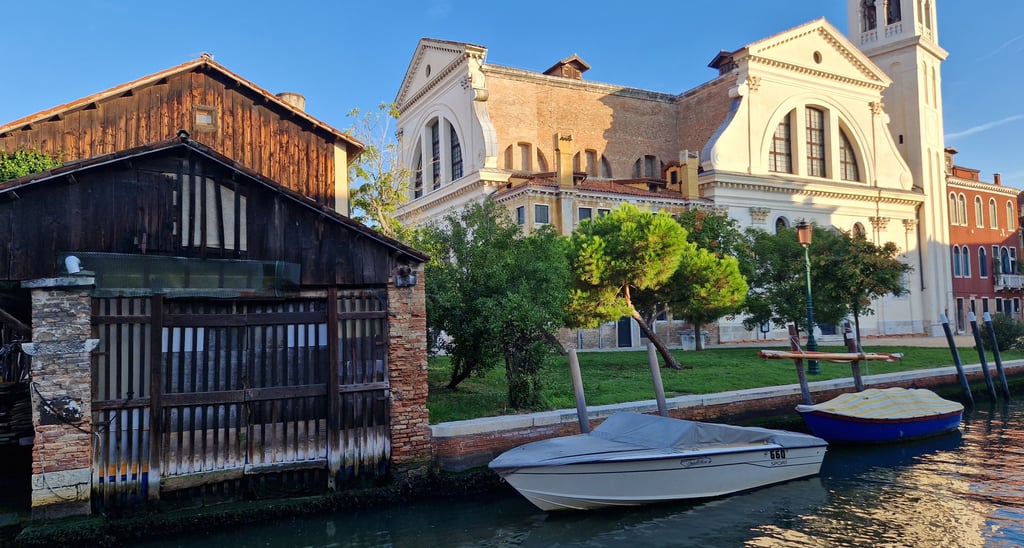

Day one : San Trovaso
Come on Tintoretta ! Let’s start our journey !
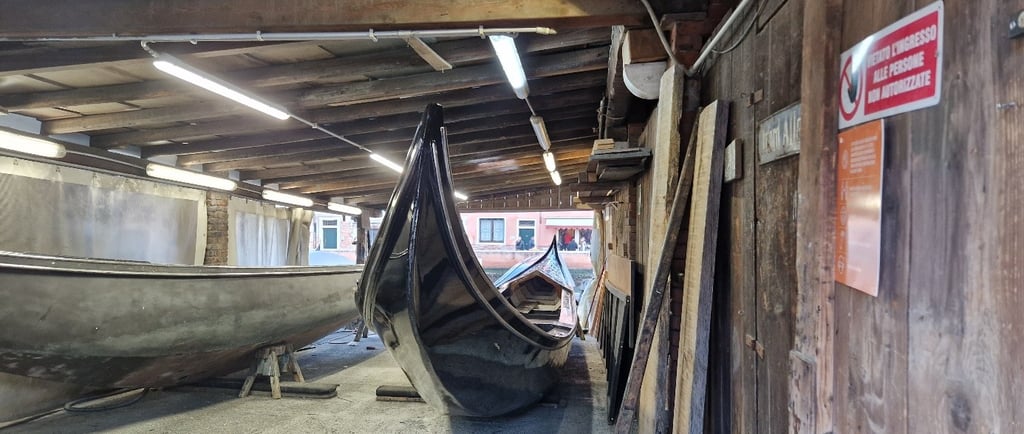

Tintoretta
Where are we going today ?
Pepe Roncino
We’re going around the islet. Each day, we’ll visit a different islet.
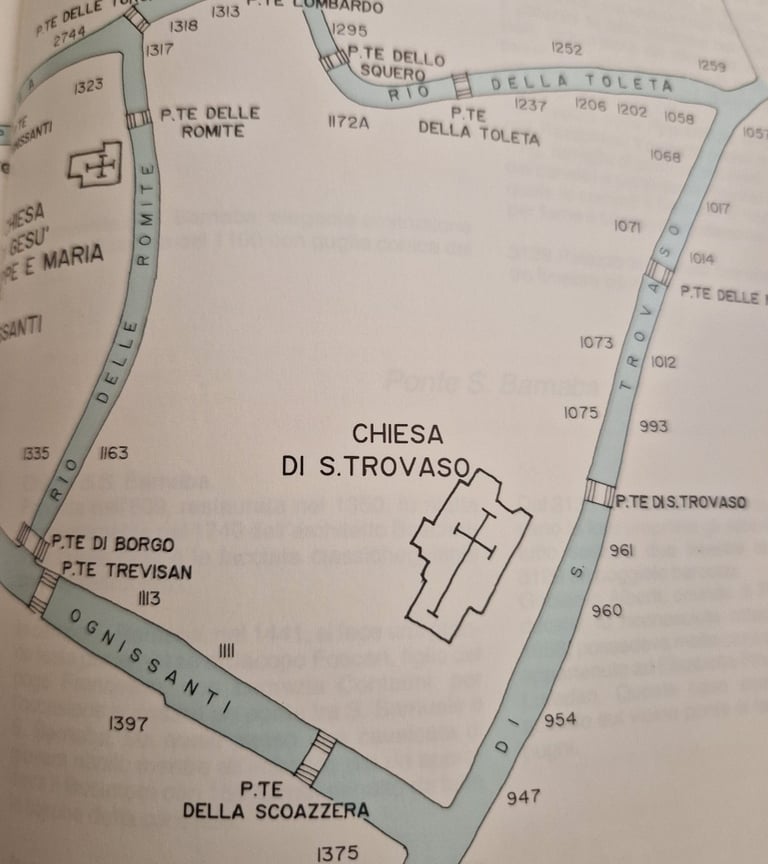

Venezia vista dall’acqua, Giannina Piamonte
How many islets are there in Venice ?
Pepe Roncino
If we count only the islets of insular Venice, there are exactly 106.
Tintoretta
Shall we go to Burano to see the colorful houses ?
Pepe Roncino
No, it’s too far for me. We’ll stay in the city of Venice and visit the islets connected by a pedestrian bridge, except we’ll never use these bridges since we’ll be going from islets to islets via the canals.
Tintoretta
I really liked this gondola garage.
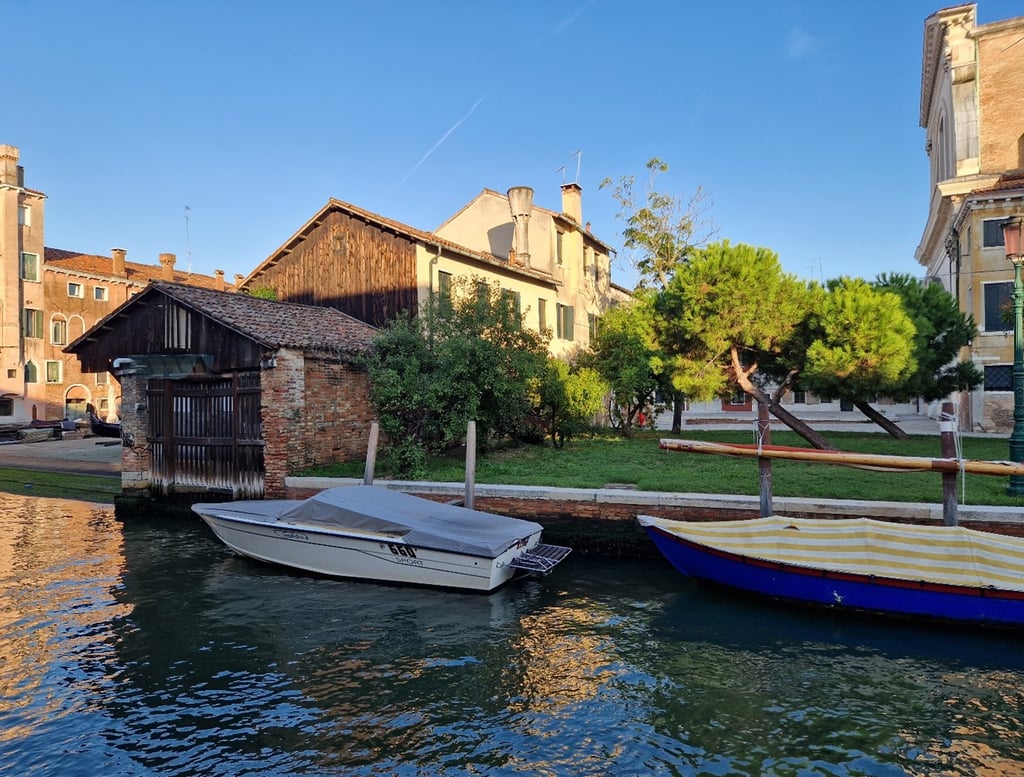

It’s more like a shipyard. In venetian, we say more precisely : squero da sotil, for a shipyard where gondolas are built and repaired. This squero is very interesting because you can see wooden sheds reminiscent of the houses where the first Venetians lived.
What’s the name of this church ?
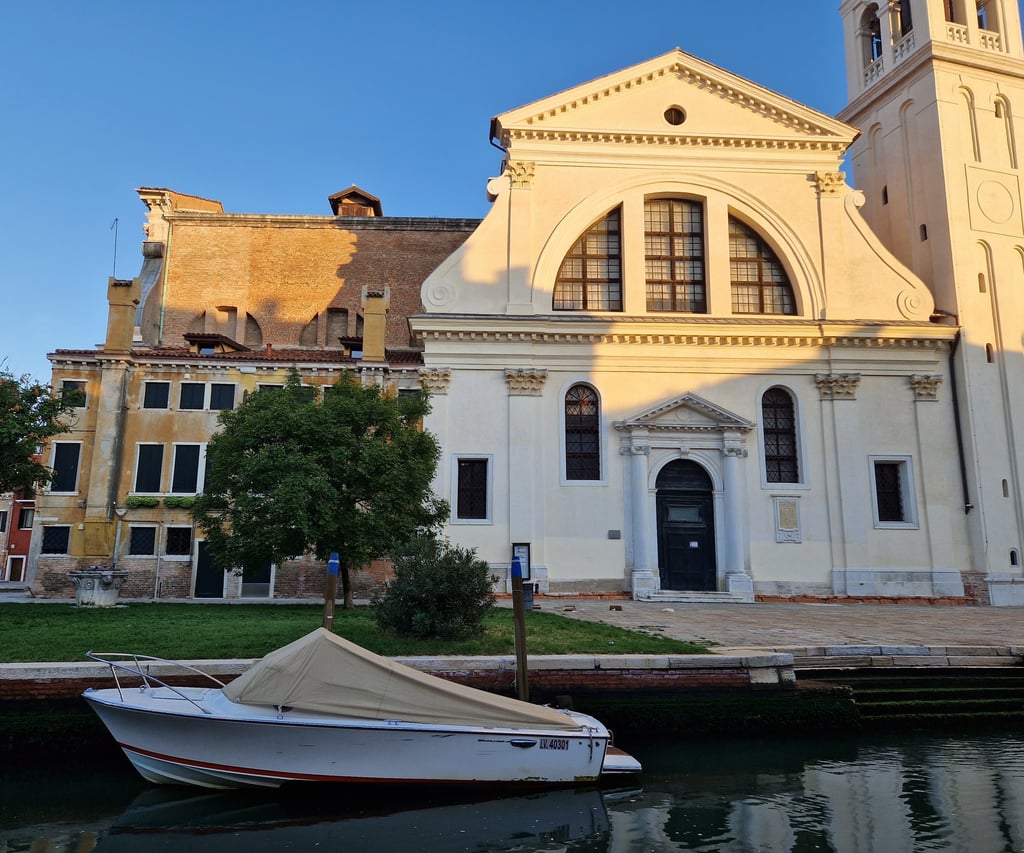

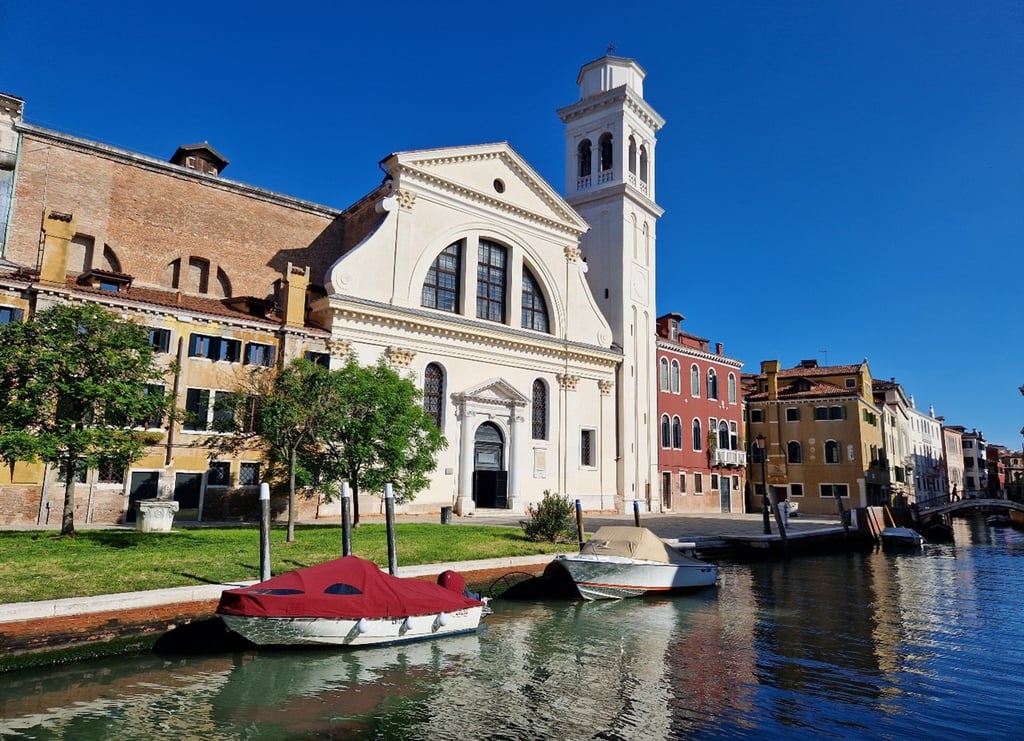

The church of San Trovaso ; she has the same name of the squero.
Tintoretta
Are there paintings by Tintoretto inside ?
Pepe Roncino
Yes, you’ll be able to see them when we’ve finished our tour of the islet..
Tintoretta
I can’t wait !
Pepe Roncino
First, enjoy the scenery !
Tintoretta
What's the name of this canal ?
Pepe Roncino
The rio of San Trovaso ! We are going under the San Trovaso bridge…
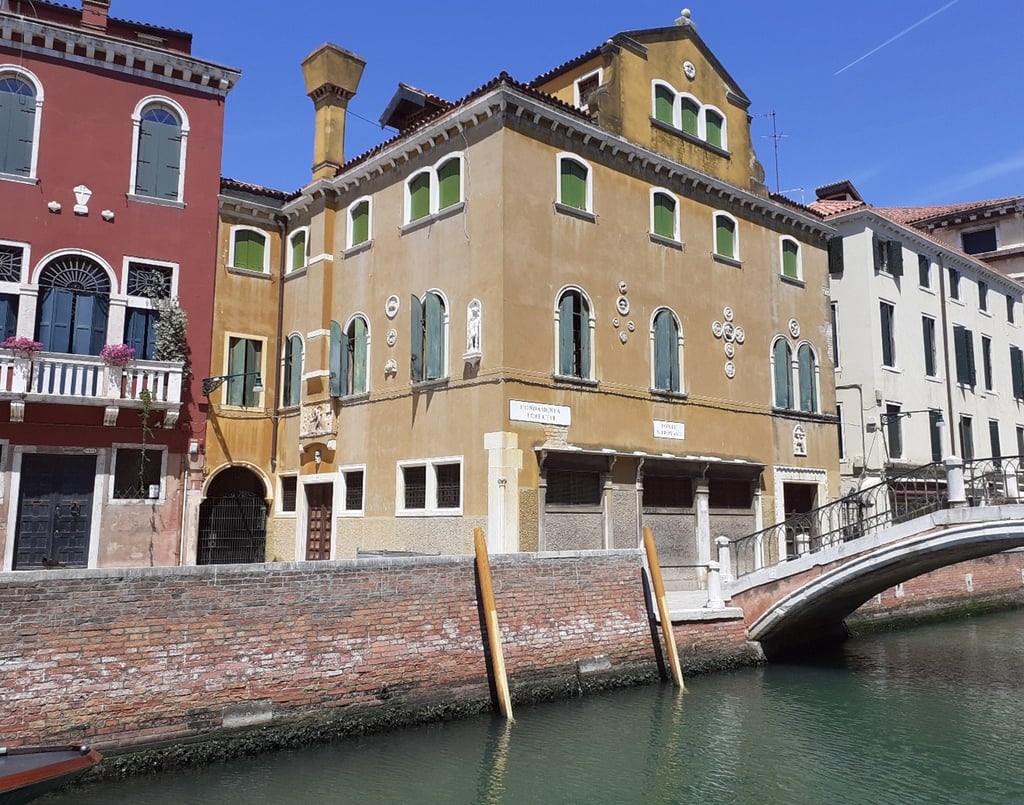

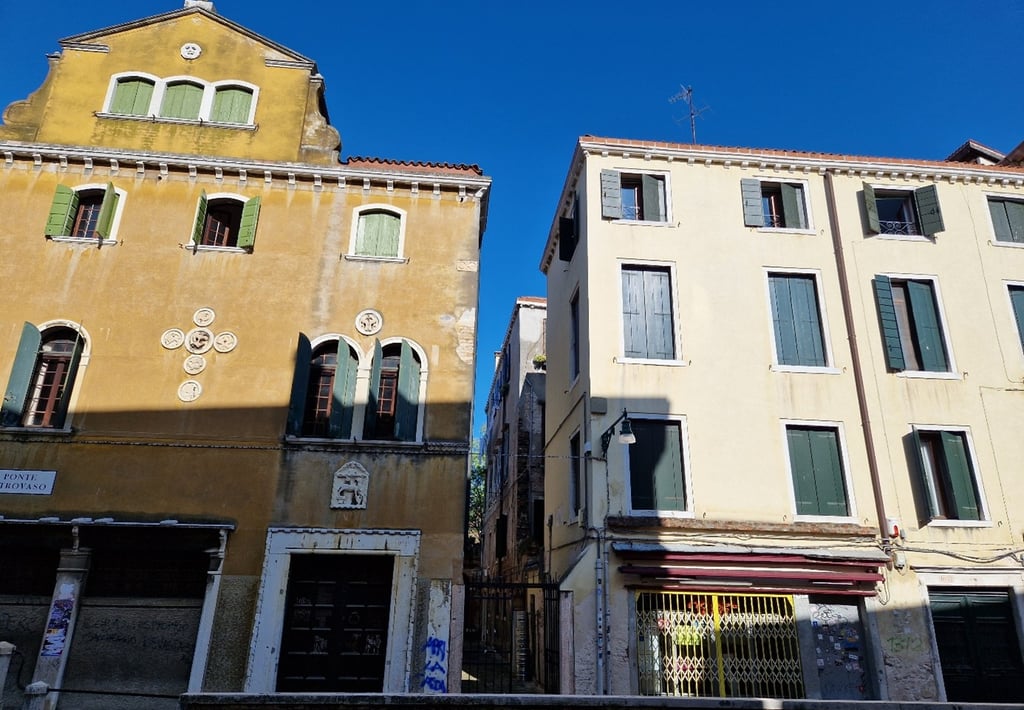

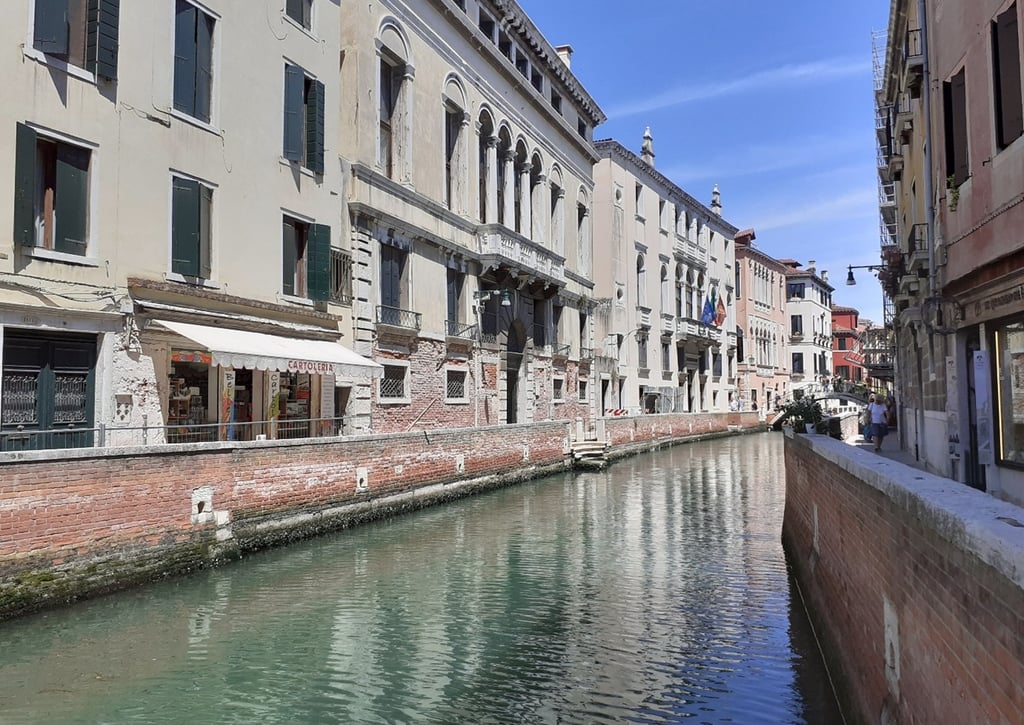

Look to the left, towards our islet of the day ! First, the palace Sangiantoffetti , with its arched windows, which dates back to the 15th century. The façade was once covered with frescoes by Tintoretto, now completely erased.
Tintoretta
What a shame !
Pepe Roncino
Just beyond is the Bollani Palace, which houses the Marco Polo Classical High School. We pass under the Maravegie Bridge. The first palace after the bridge is the Maravegie Palace, built in the Gothic style.
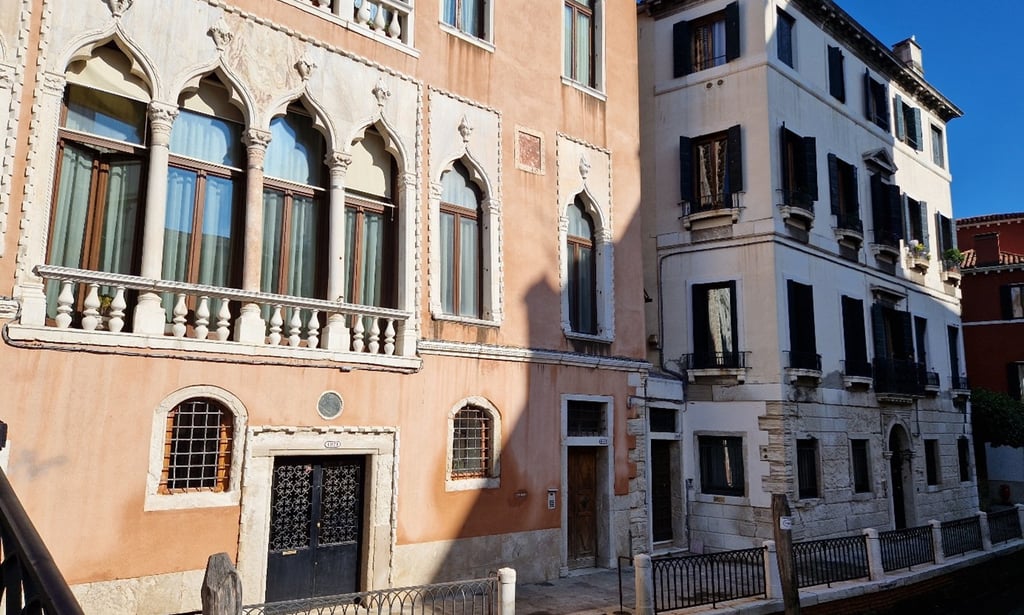

Maravegia is said to be the name of the family that owned this palace. But a recent legend tells that the name Maravegie (plural of maravegia in Venetian) is linked to the wonders - meraviglie in Italian – that supposedly occured on this bridge or in this palace. I’ll tell you the story tonight in the gondola.
Great ! Every evening you’ll tell me a story !
Pepe Roncino
No, I won’t have a beautiful story every evening linked to a place we’ve passed during the day. But I have 18, for a quarter of the islets.
Tintoretta
It will be the racconto di Pepe Roncino !
Pepe Roncino
In Venetian contraction, it will be il Racconcino.... We turn left to take the rio de la Toletta...
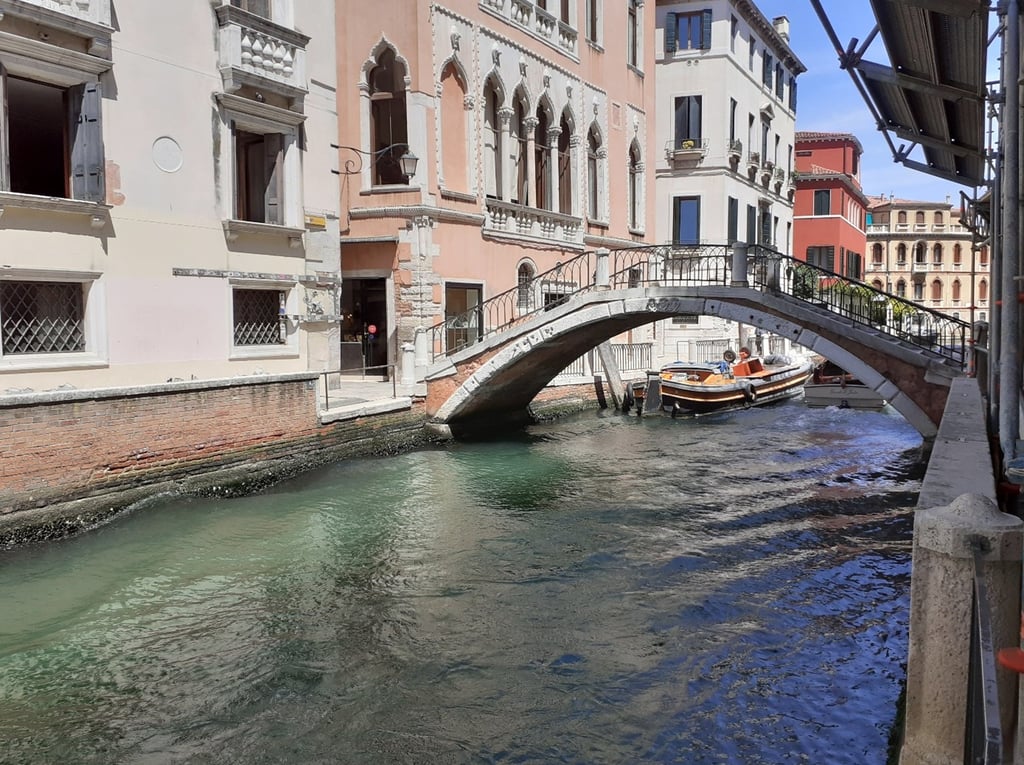

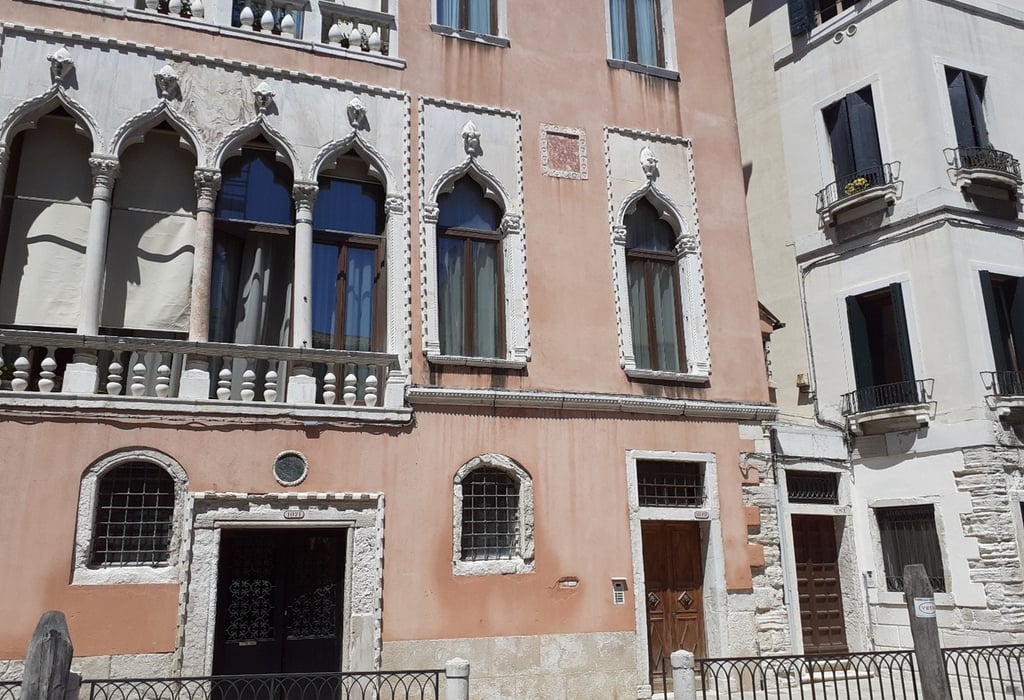

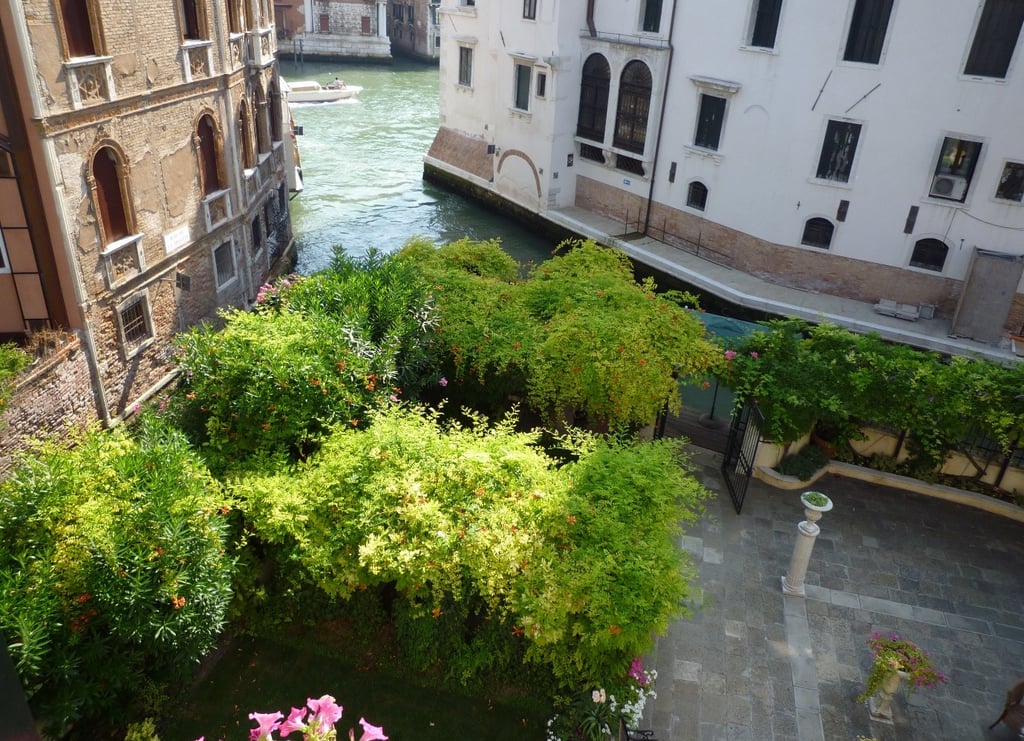

Tintoretta
La Toletta, is that the name of the bookstore where you bought the red books ?
Pepe Roncino
Yes, it took its name from the canal and the calle where it's located. look at the bag ! !
Tintoretta
« La libreria, nel lontano 1933, prese il nome dalla strada – o meglio, sacca – nella quale è ubicata. »
Pepe Roncino
And below is quoted the passage from Tassini where the etymology is explained : the toletta designated a small plank which served as a bridge to cross the canal.
Tintoretta
Calle della Toletta shouldn't be far !
Pepe Roncino
We're just passing under the bridge that connects the two parts of the calle..
Tintoretta
This islet is still quite large..
Pepe Roncino
Yes. we now reach the rio Malpaga but turn left to take the rio delle Eremite.
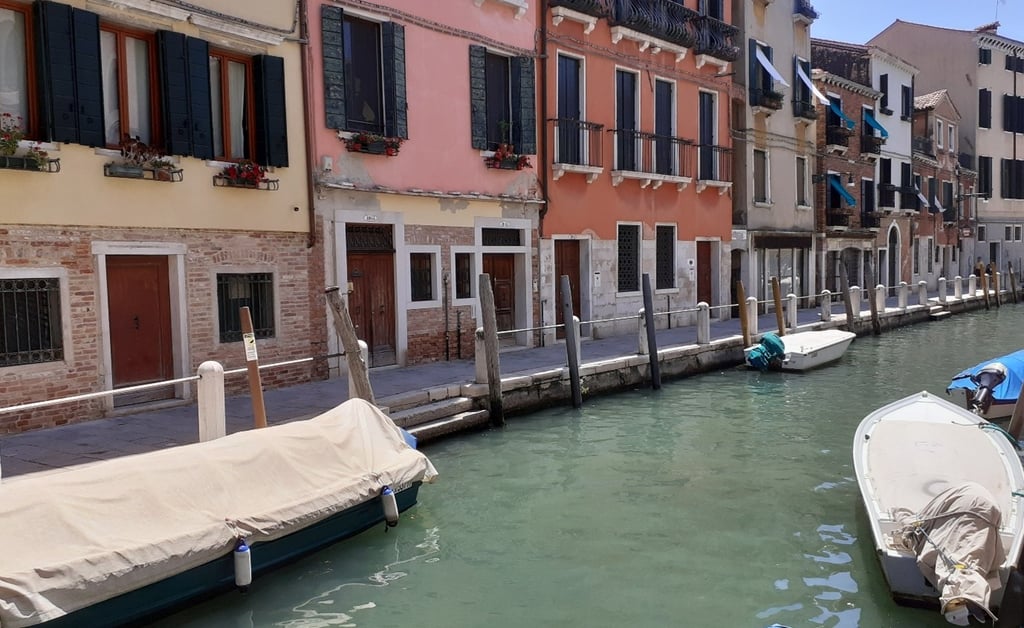

We will look at the etymology of the name Eremite tomorrow when we visit the islet on the right...
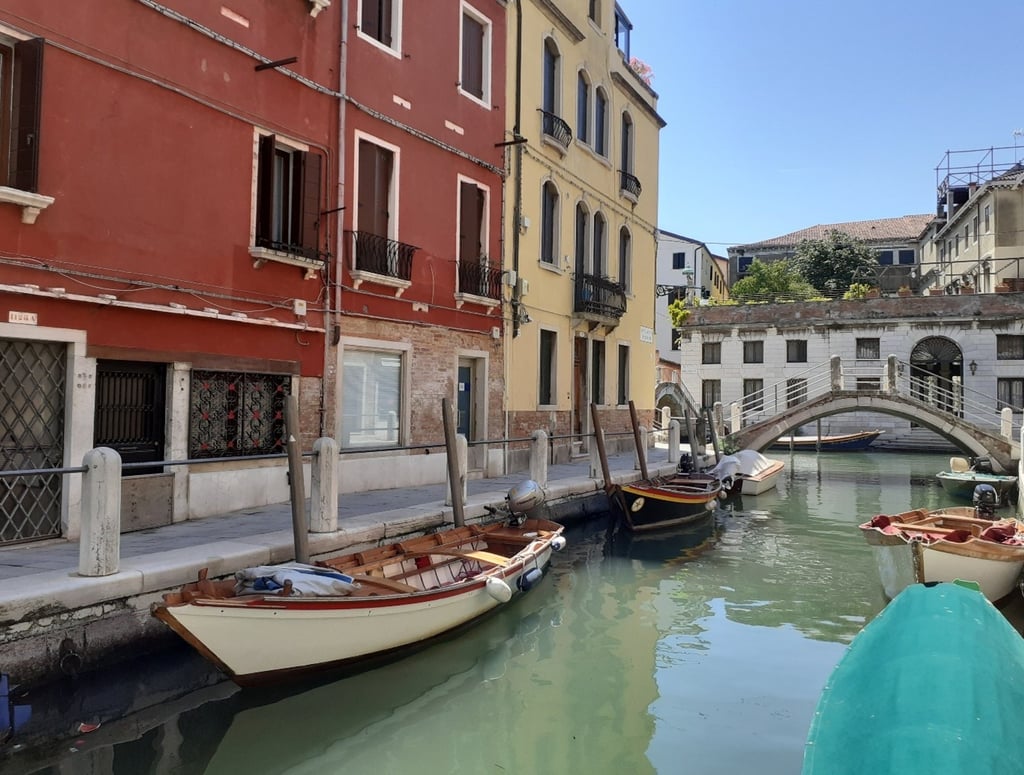

The same goes for the name of the rio we are going to take on the left : Ognissanti.
Tintoretta
Are we almost done touring the islet ?
Pepe Roncino
Yes, we join the rio of San Trovaso on the left and we'll stop at Campo San Trovaso..
Tintoretta
A gondola trip is so beautiful !
Pepe Roncino
Yes, my Tintoretta. It's a gondola trip because we go from islet to islet. But now, we're going to get off the gondola to visit the islet on foot.
Tintoretta
Will we sleep in the gondola tonight ?
Pepe Roncino
Yes, it will be mild tonight. We'll be comfortable, sheltered by our felze.
Tintoretta
Why is our cabin called felze ?
Pepe Roncino
Felze in venetian, felce in italian, means fern because the gondola cabins were made of canvas. We'll pull it down tonight. I'll sleep on the lawn you see there, one of the few in Venice !
Tintoretta
It's not a beautiful lawn !
Pepe Roncino
No, but I'll be very comfortable there. And you know I don't sleep much !
Tintoretta
Will you sit next to the gondola ?
Pepe Roncino
Yes, we'll really be side by side.
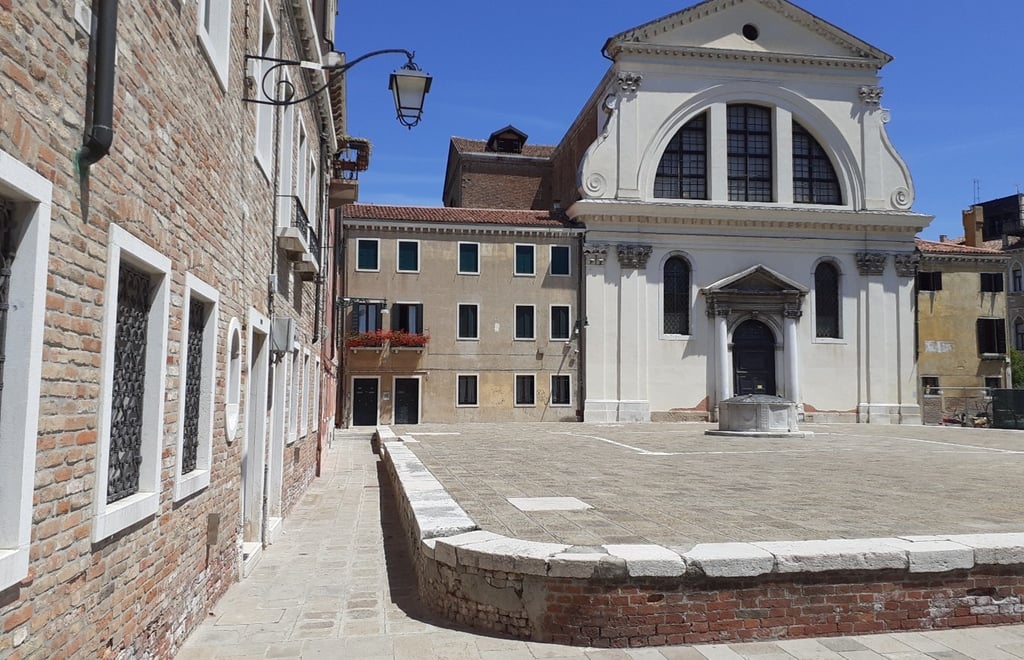

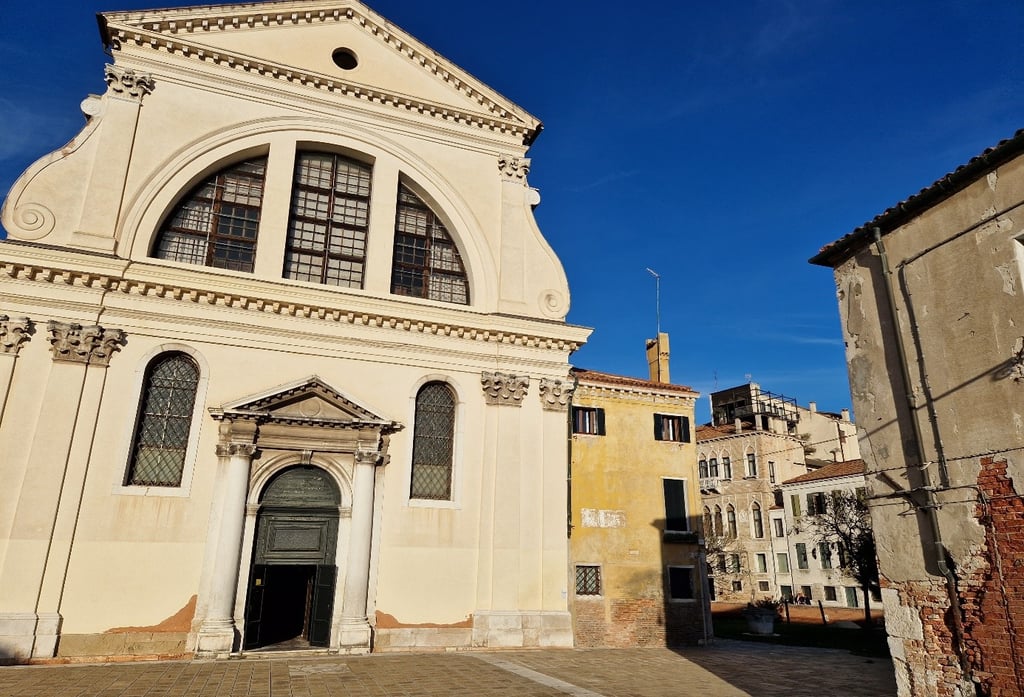

Tintoretta
Shall we visit the church ?
Pepe Roncino
Yes, the real name of the church is : Santi Gervasio e Protasio, two christian martyrs. San Trovaso is the contraction of the two. You'll see that often name are contracted in Venice. This church was built in 1591 in the place of two successive churches. The first was built close to the founding of Venice.
Tintoretta
When was Venice founded ?
Pepe Roncino
It's a long story that i'll tell you during dinner. The first building was destroyed by a fire in 1105. The second collapsed suddenly in the night from 11 to 12 september 1583. The particularity of this church is that it has two almost identical façades : one which faces the place we now stand on, on the side of the rio of San Trovaso ; the other faces on the other side of the campo San Trovaso, along the rio of Ognissanti. The current campanile dates from 1690, as it inscribed at the bottom.
Tintoretta
I like campaniles !
Pepe Roncino
Venice's campaniles are very varied in style. This one is rendered with white marble powder while the older campaniles are made of brick. Look at the gate ! We see, above, mascarons.
Tintoretta
What are mascarons ?
Pepe Roncino
In architecture, they are masks, faces. As you can see, they are grotesques faces, monstrous that make strange grimaces.
Tintoretta
Why these mascarons ?
Pepe Roncino
The aim was to cast out the demon and prevent him from entering and ringing the bells.
Tintoreretta
We are fortunate that these mascarons are here ! Otherwise, the démons could have woken us up tonight !
Pepe Roncino
See, Tintoretta, the part of the place that is in front of the church is elevated : it was to contain clay reservoirs used to collect rainwater for the well in the center. What we see of the well (pozzo in italian) is called the vera, the vera da pozzo (the step of the well margelle du puits in english).
Tintoretta
We enter in the church to see the paintings of Tintoret ?
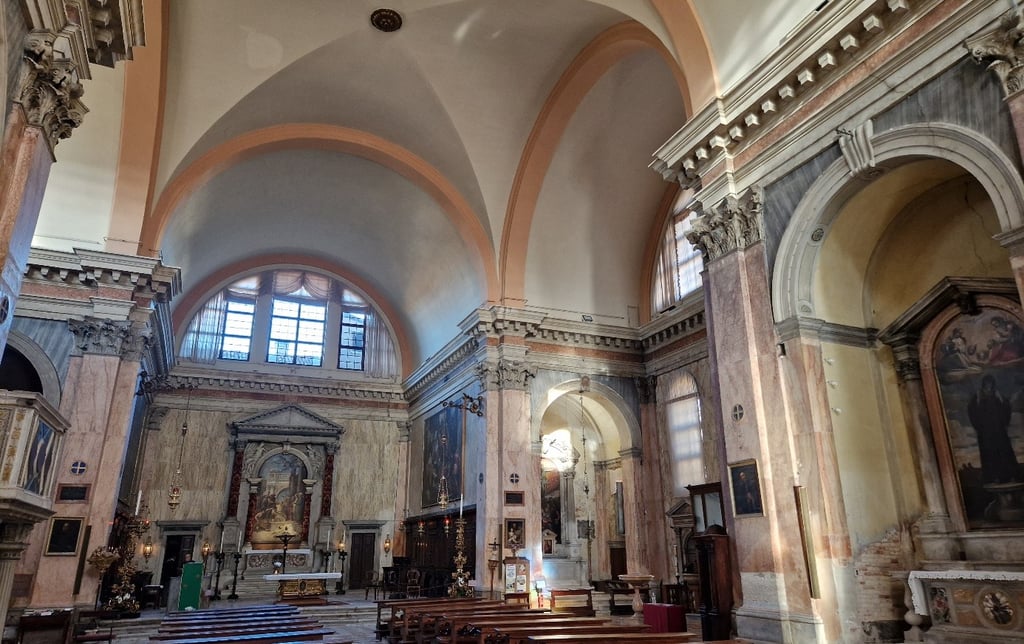

Yes, we see four canvases of Tintoret. Two in the presbytery : first on left, Saint Joachim driven from the Temple.
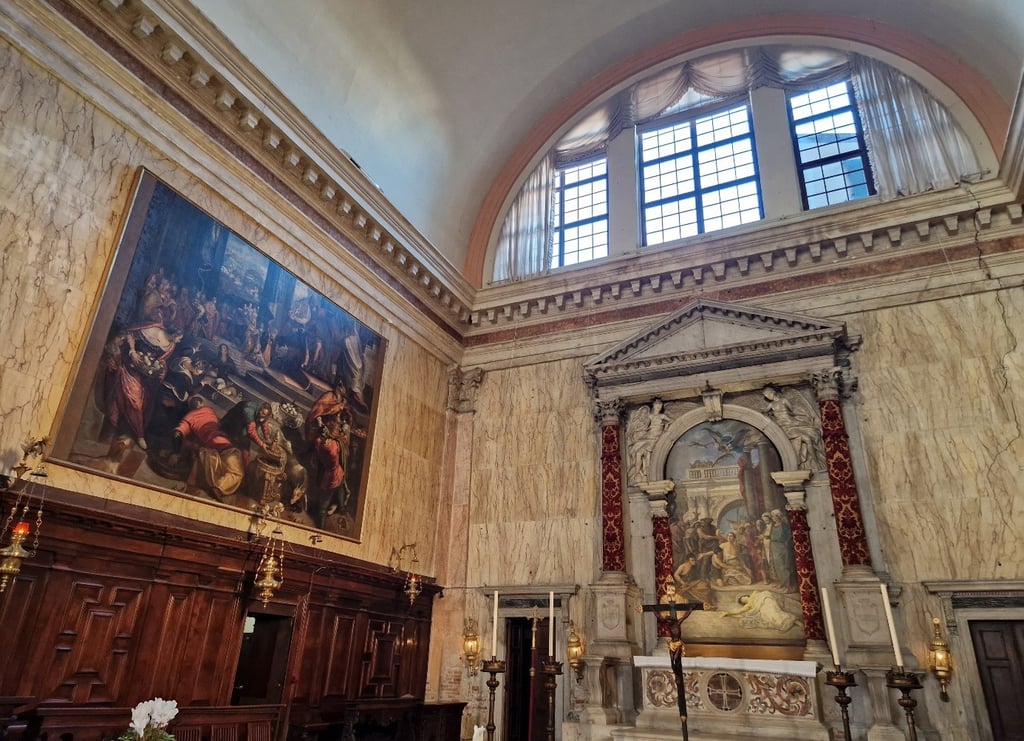

Who was Saint Joachim ?
Pepe Roncino
Saint Joachim was the father of the Virgin Mary. While he was married with Saint Anne for twenty years without having any children, he went to Jerusalem to make an offering at the Temple. But the priest forbid him from entering the Temple, judging that his infertility was an offense to God.
Tintoretta
The canvas on the right, it must be the Adoration of the Magi, because I see a manger.
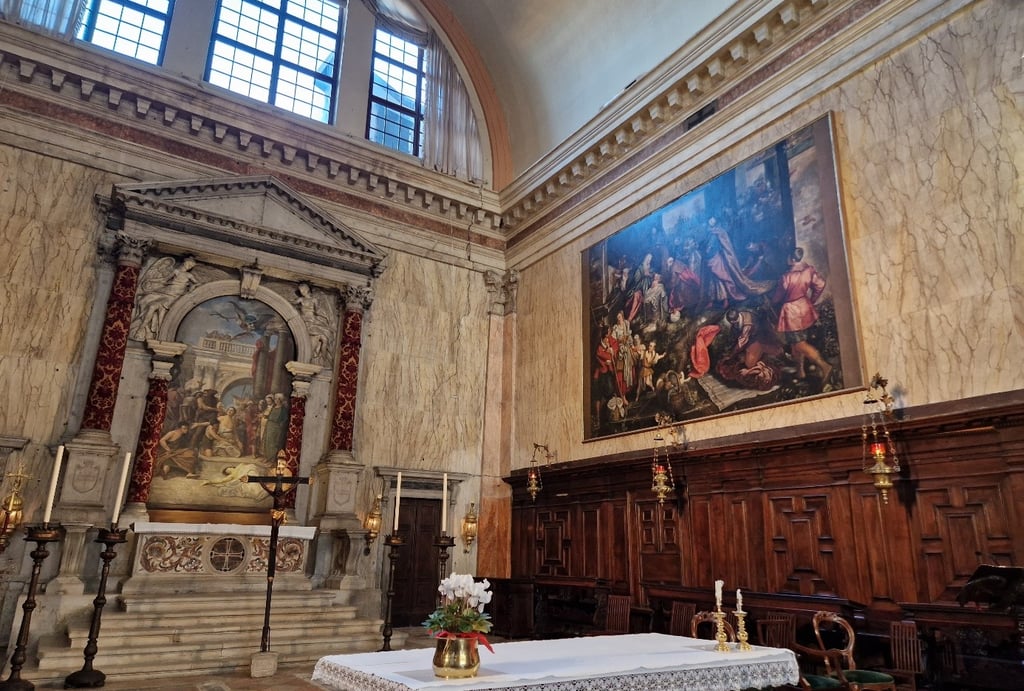

Right Tintoretta ! However, these two canvases wouldn't be by Jacopo Tintoretto but rather his son Domenico.
Tintoretta
I am thinking of the Tintoret's canvas in Madonna dell’Orto : the Présentation of Marie at the Temple. Joachim and Anne may have wanted to take revenge on the priest who expelled Joachim from the Temple for his infertility.
Pepe Roncino
Yes, well done, Tintoretta ! I know that this canvas has been on your mind since you read the beautiful book by Melania Mazzuco : the Tintoret and his children..
Tintoretta
Yes, since then, you have been calling me Tintoretta !
Pepe Roncino
In the chapel Milledonne, we find The Tentations of Saint Antoine, that Jacopo painted in 1577.
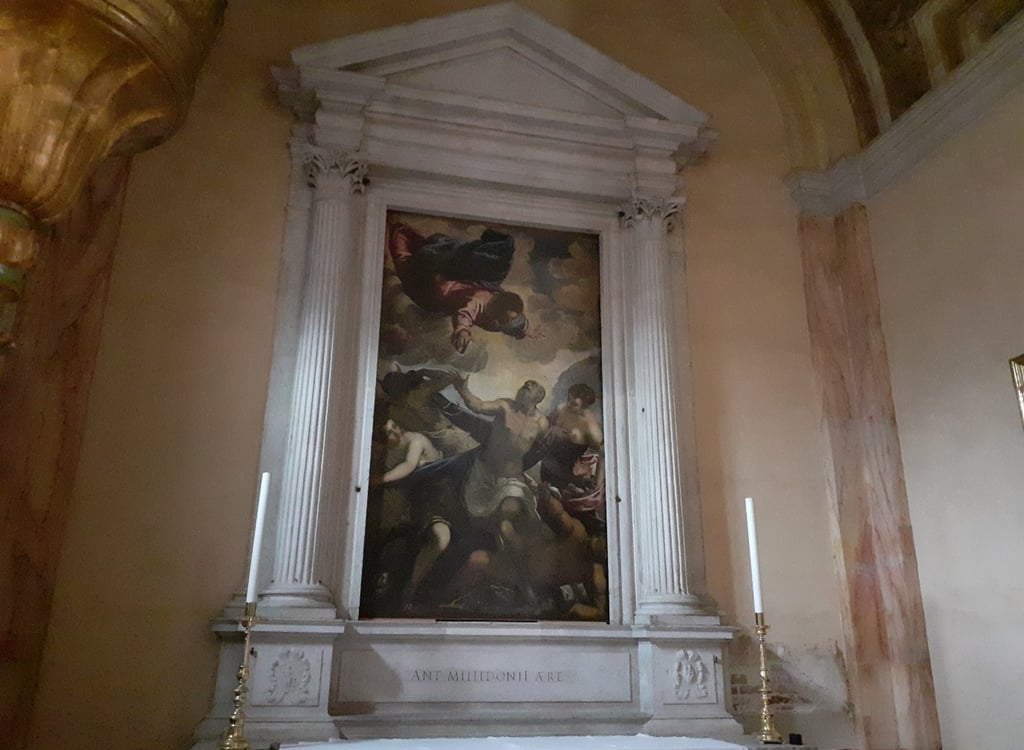

Tintoretta
We see the Christ who is coming down from the heavens to deliver him from temptations.
Pepe Roncino
Yes, Saint Antoine is called Saint Antoine of Padoue because he died there in 1231.
Tintoretta
When we lose something, we must pray to Saint Antoine.
Pepe Roncino
Yes, my Tintoretta, but it's better not to lose anything ! In the chapel of Holy Sacrament, this is the fourth canvas by Tintoret : L’Ultima Cena.
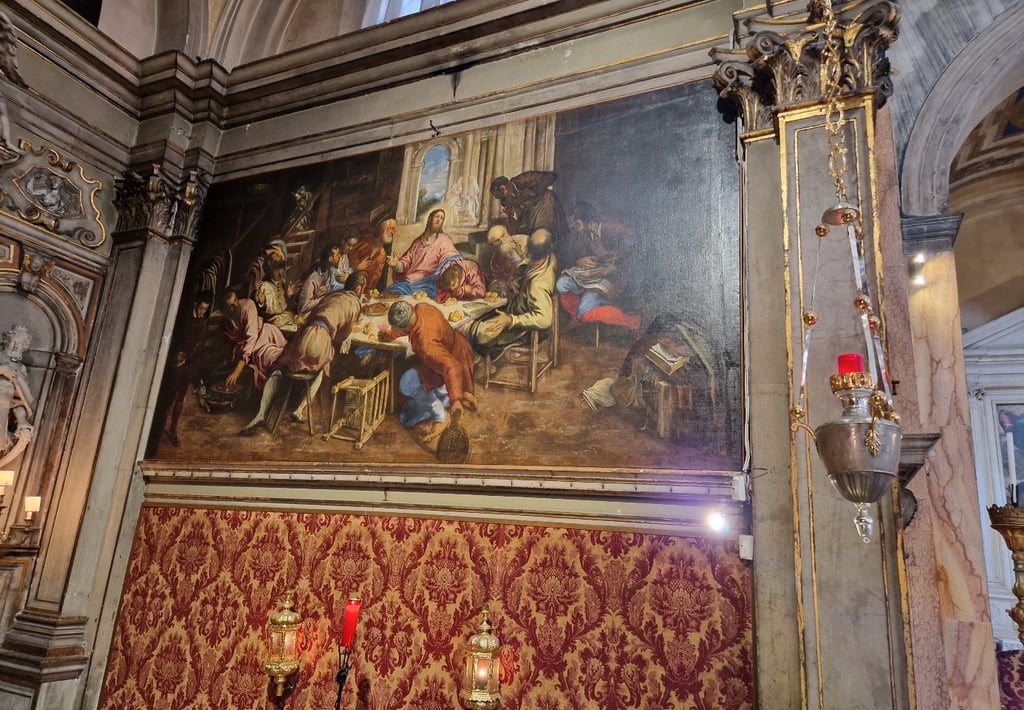

Tintoretta
There is a lot of mess around the table ! Talking about cena, where are we going to eat tonight ?
Pepe Roncino
Now that you have seen Tintoret's canvases, you are already thinking about eating ! We still have beautiful things to see on this islet. first in this church.
First, a painting by Domenico Tintoretto, Jésus on the Cross in Molin's chapel.
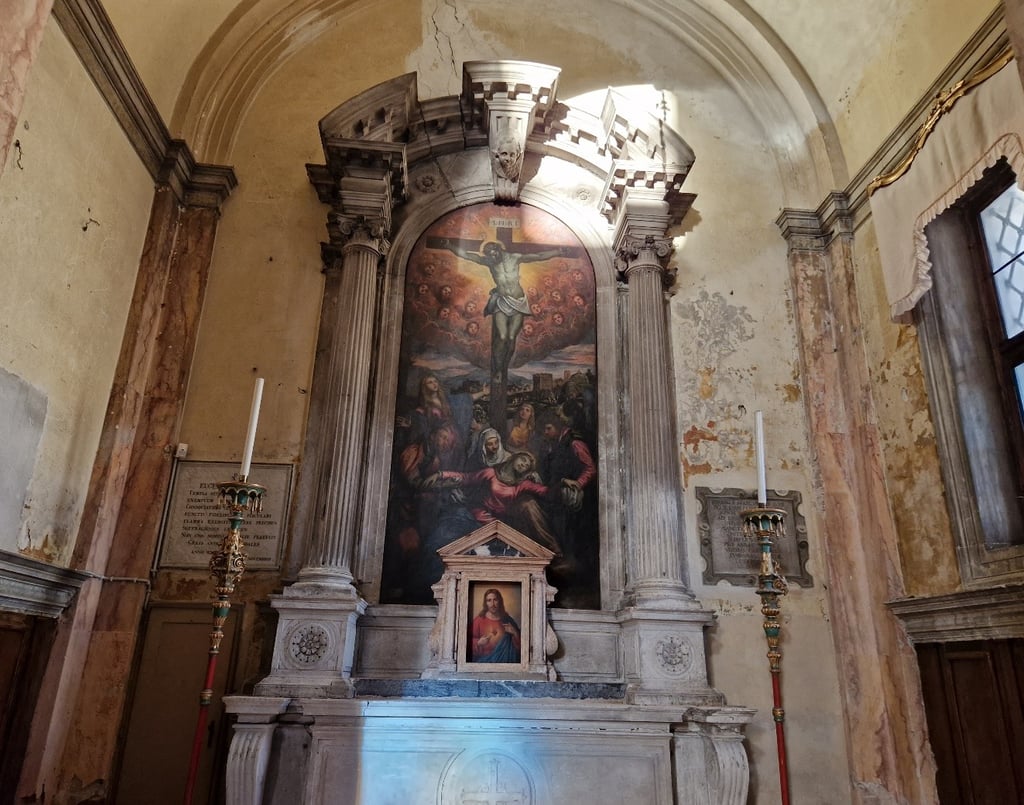

Then the chapel of the Nativity with this artwork by Palma The Young, showing women who are taking care of Ann and Mary, who was just born.
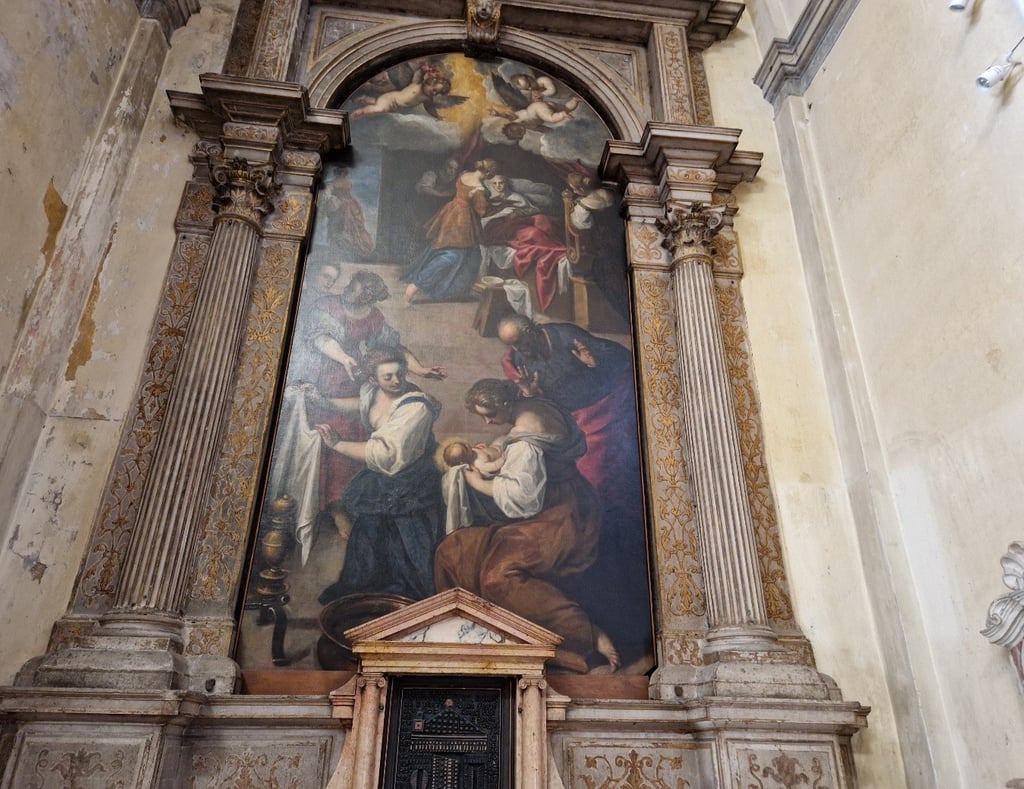

And of course the altar, with the altarpiece of the saints Gervasio, at the foreground, who was just flogged to death and Protasio, who will be beheaded soon…
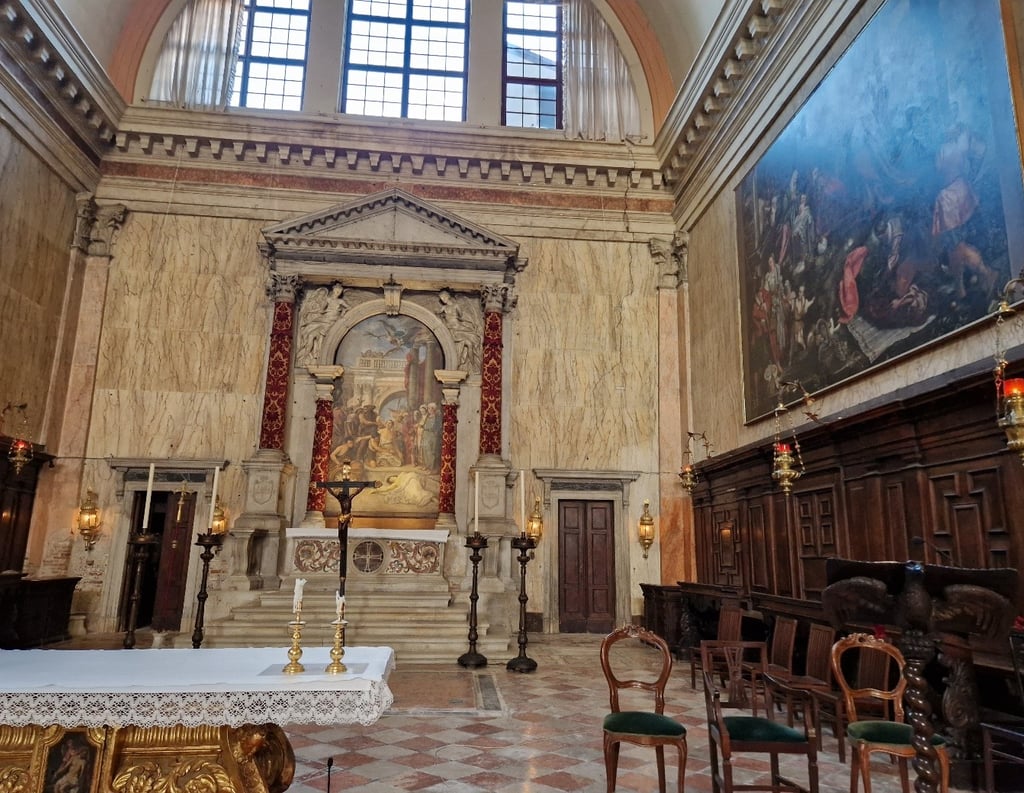

Here we can also find the altar of the squerarioli school : the craftsmen who built the gondolas as well as the little boats. In 1773, there were still almost 300 of these craftsmen, who worked in 45 squeri.
Tintoretta
Squeri, like this squero ?
Pepe Roncino
Yes, my Tintoretta. Now, there are only three left…
Tintoretta
Where are we going now ?
Pepe Roncino
We are going to go around the islet in the same direction than in gondola. We are going to walk along the rio San Trovaso through the fondamenta Toffetti.
Tintoretta
Why is this street called fondamenta and not calle ?
Pepe Roncino
A fondamenta, is a street that goes along a canal. We turn left to take the sacca della Toletta.
Tintoretta
Another name !
Pepe Roncino
Yes, sacca means a place where water goes in and forms a little harbour. There used to be a lot of sacce in Venice but, from a decree of the 3rd of december 1460, they were progressively buried in order to build edifices in their place. The term sacca remained, after this place was buried. on the fifth week, we'll see the Sacca della Misericordia, which was not buried and which is now a marina… We turn right to take the calle seconda della Toletta… then the calle della Toletta… we'll take the ramo della Toletta immediately on the right… We arrive On arrive where the sacca della Toletta becomes the fondamenta della Toletta….
Tintoretta
La libreria della Toletta !
Pepe Roncino
Yes, it's one of the most beautiful bookshops of Venice. Here we can find the Lorenzetti : Venezia e il suo estuario, an historic, artistic and very valuable guide….
Let's cool down at this fountain !…
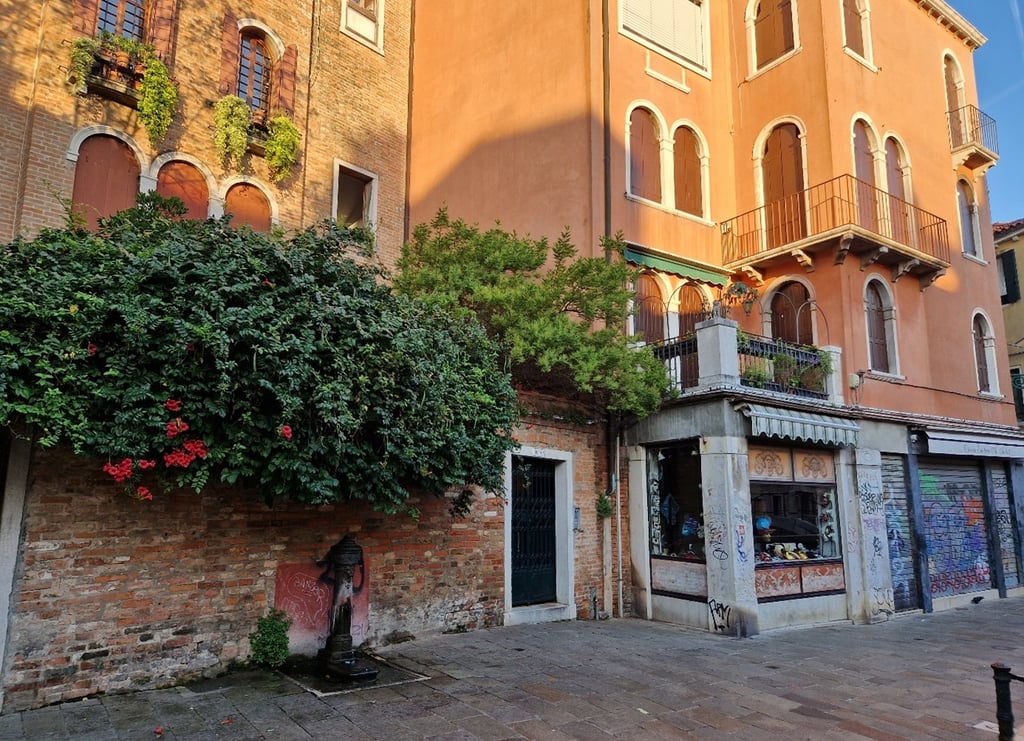

We take a left into the calle delle Eremite…
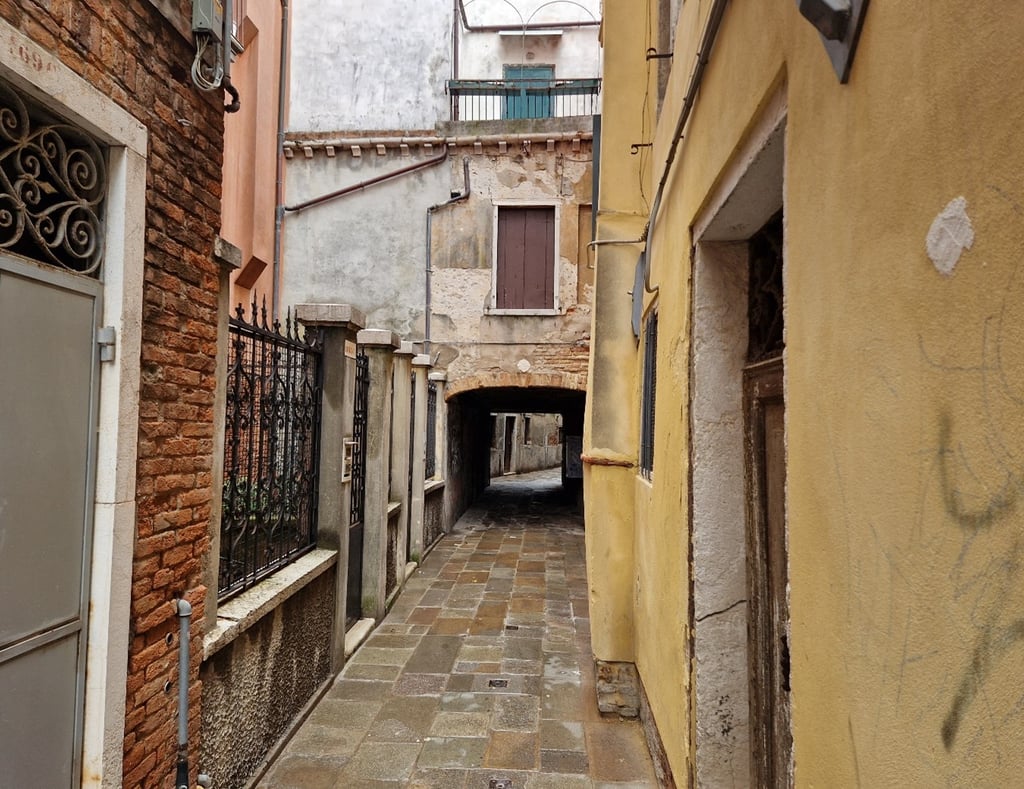

and we pass under the sottoportego delle Romite…
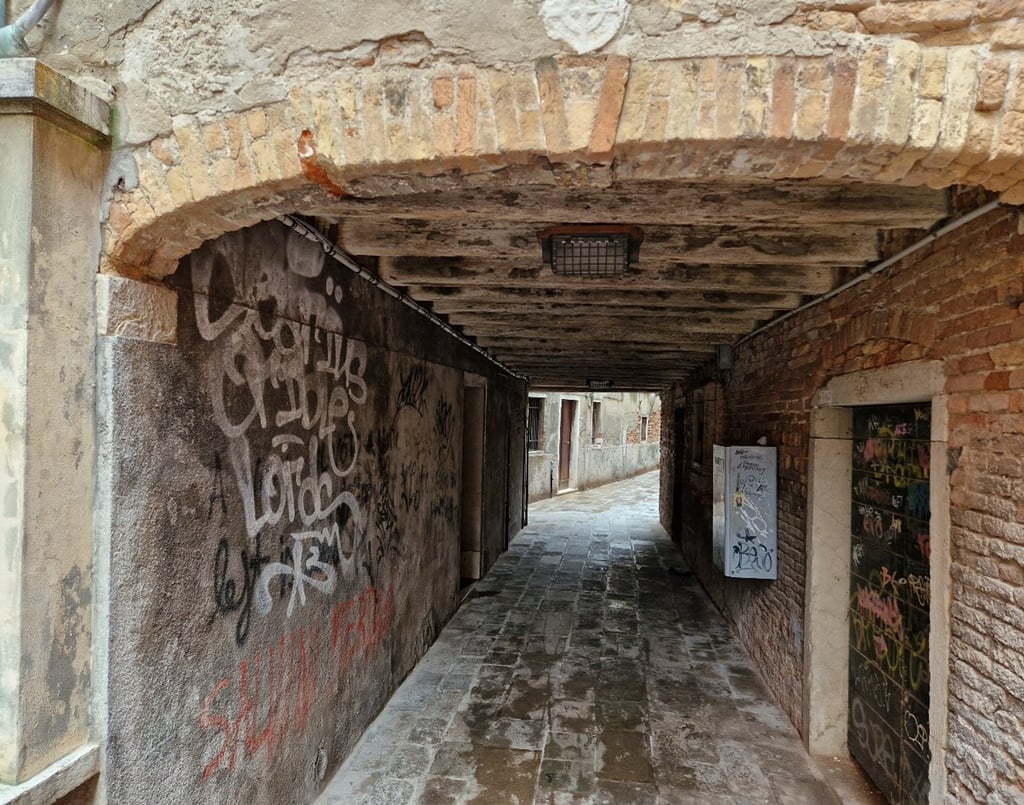

Look at the beautiful the capitello !
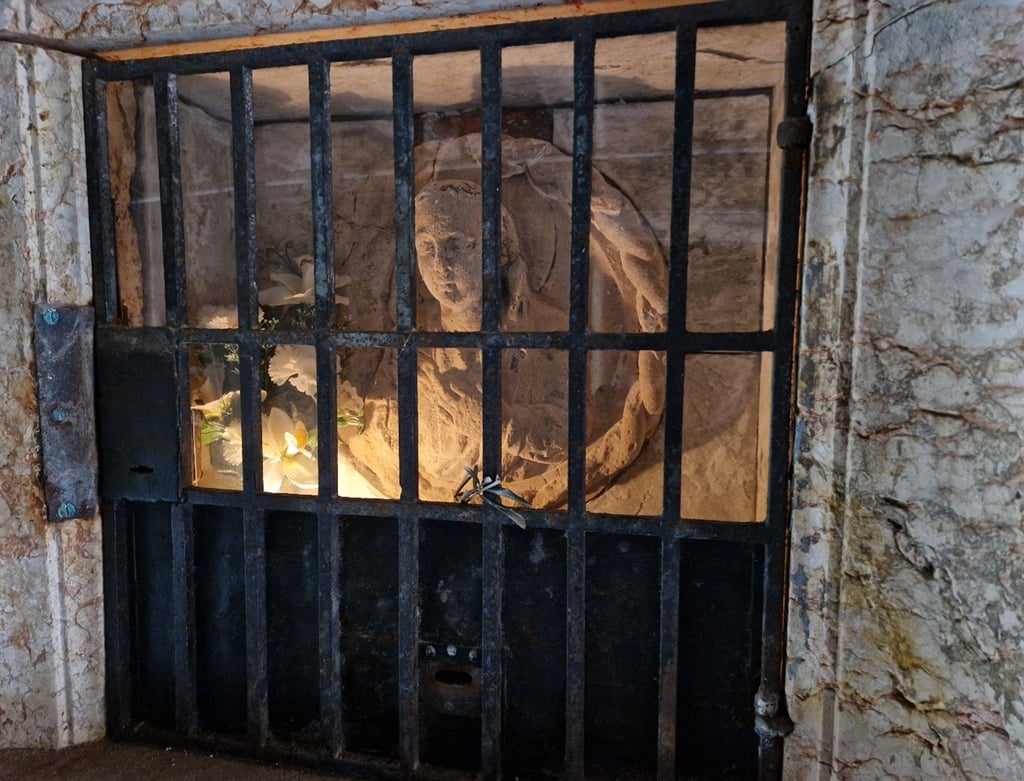

Pepe Roncino
We arrive on the fondamenta di Borgo. Its name comes from this islet which was called the Borgo of San Trovaso. Look at this palace with this quadrifora with columns ! This is the Bonlini palace, named after a rich merchant from Bergamo, who reached the venetian patriciate in 1667
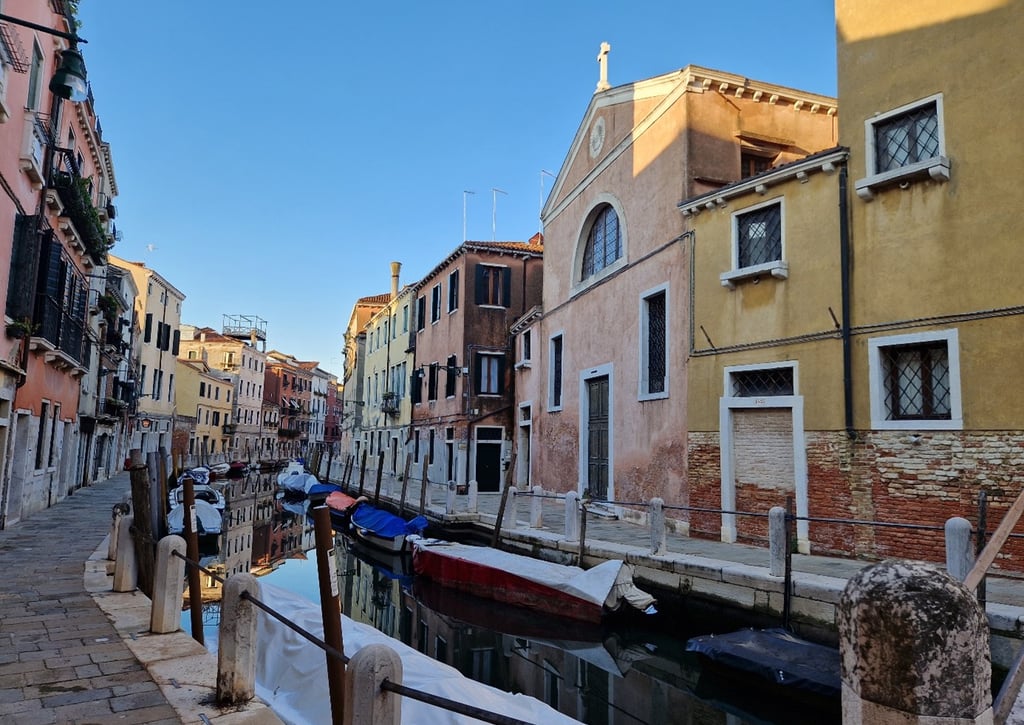

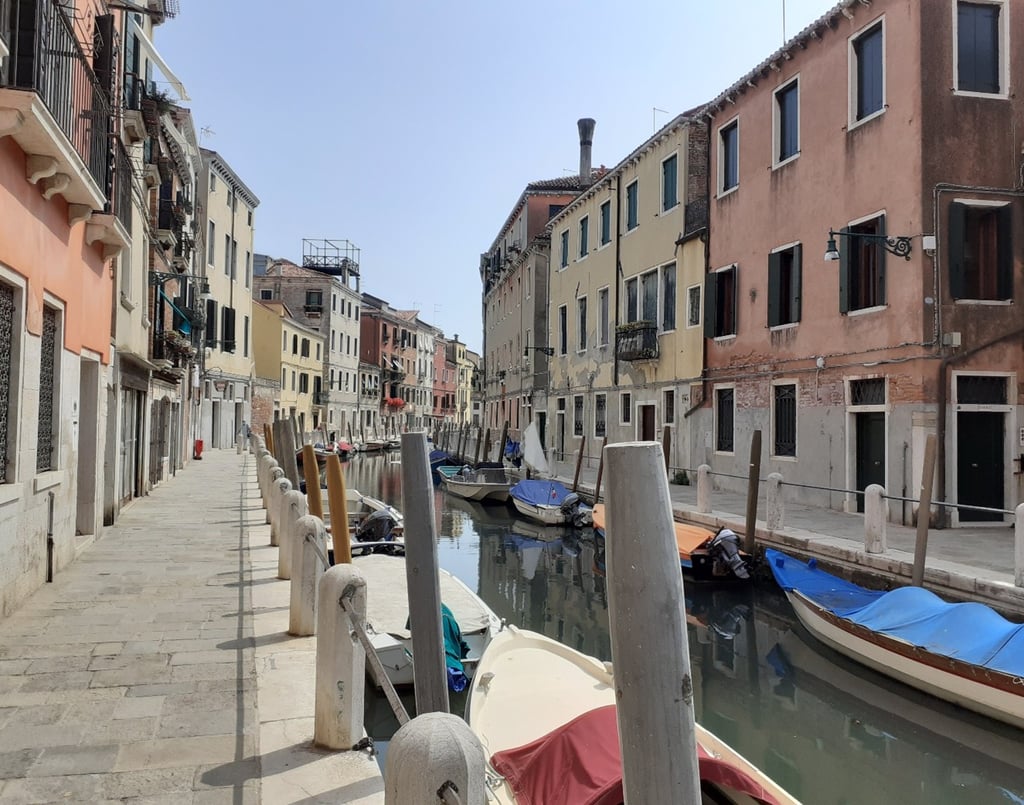

Tonight, we'll have dinner in this osteria, which has an inside garden : the locanda Montin. I'll make a reservation…
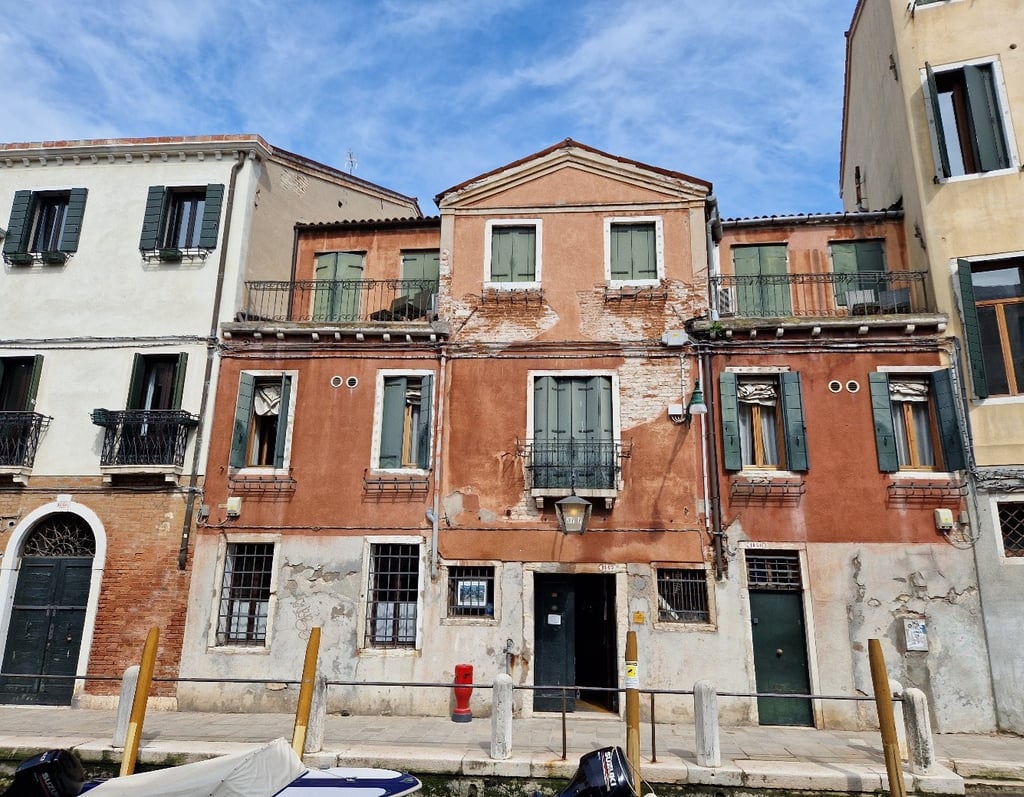

Tintoretta
Great !
Pepe Roncino
At the end of the fondamenta di Borgo, we turn left to end up on the fondamenta Bonlini.
Tintoretta
The same name as the palace's owner on the fondamenta di Borgo ?
Pepe Roncino
Absolutely ! He didn't give his name to the fondamenta where his palace was but to the perpendicular one.
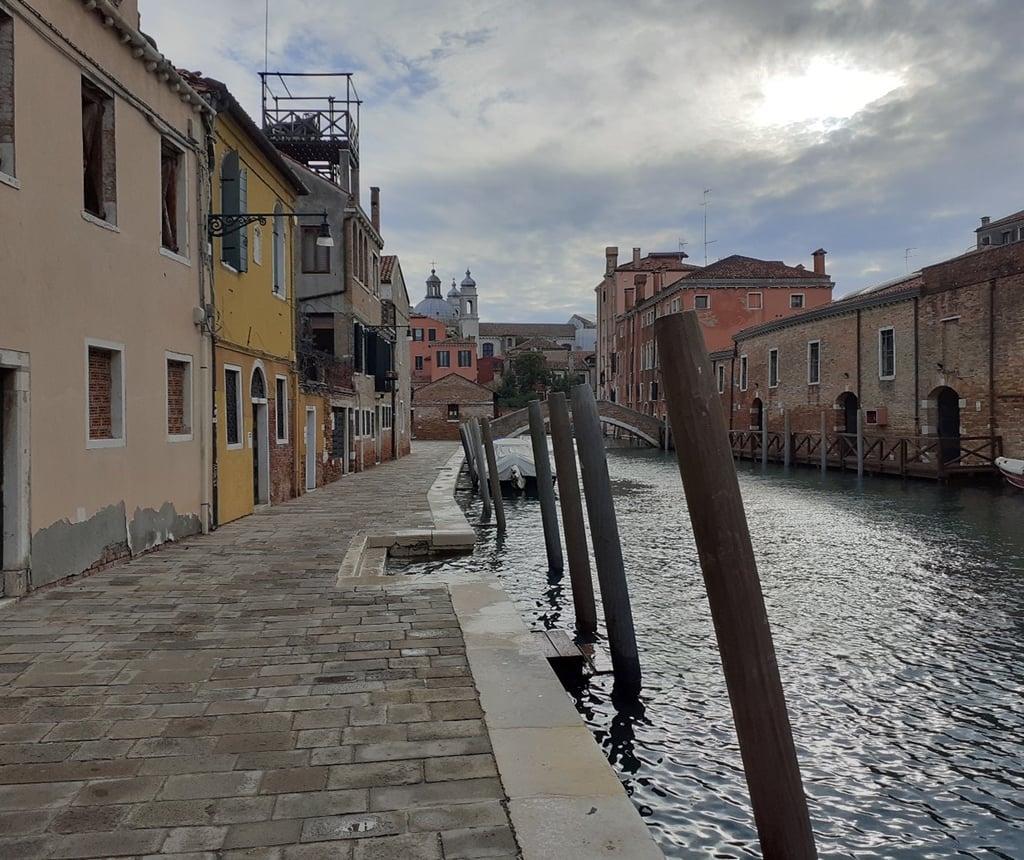

Tintoretta
We have arrived to campo San Trovaso.
Pepe Roncino
Yes, we are back !
Tintoretta
Our gondola is still here, we won't need to invoke Saint Antony !
Pepe Roncino
I am not sure that Saint Antony is useful enough in case of robbery ! Take a cardigan ! You could be cold leaving the osteria.
Tintoretta
Are we taking the fondamenta Bonlini ?
Pepe Roncino
Yes, let's go !
Tintoretta
We turn right to take the fondamenta di Borgo.
Pepe Roncino
Here is our osteria !
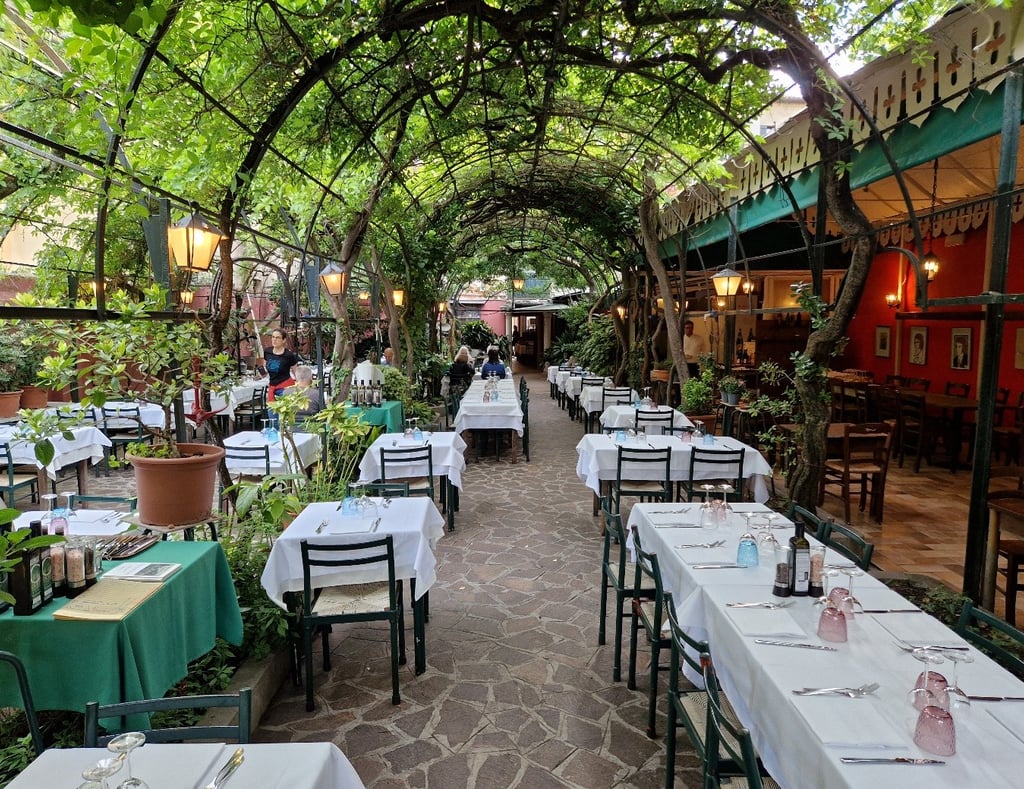

Tintoretta
i really want a plate of spaghettis !
Pepe Roncino
I recommend the bigolis, they are large spaghettis. They are prepared with an anchovy and oignon sauce.
Tintoretta
Yes, I love anchovies !
Pepe Roncino
Cameriere ! Due bigoli in salsa per favore !
Tintoretta
Can you tell me about Venice's founding, Pepe ?
Pepe Roncino
Yes, it's a long story because Venice wasn't born on a precise day, the 25 march 421, as the Vénetians want to make us believe. The city of Venice was formed little by little, by the linking of hundreds of scattered islets. I am talking about the Venice that we visit, the insulary Venice, made up of one hundred and six islets today connected by bridges. Knowing that all around there are still many scattered islets in the lagoon. As you know, I'm not a scholar ; but i like to read and understand. In a little book that we can find in the toletta bookshop, not far from here, Giovanni Distefano explains how Venice was born. He first tells us how the lagoon formed : the rise and the fall of the sea level at the start of christianity.
Tintoretta
Did Venice not exist at the time of Christ?
Pepe Roncino
No, it didn't exist. The islets formed progressively by the accumulation of mud and sediments coming from the rivers descending from the Alps. They were enlarged by actions of men who settled there. They took the mud, wood and rocks to create larger islets and reinforce the terrain in order to build cabins, like the ones you saw in the squero.
Tintoretta
But why did the palaces replace these cabins ?
Pepe Roncino
Because patricians, very rich nobles,running away from barbarians settled in the lagoon.
Tintoretta
Why did they take refuge in Venice ?
Pepe Roncino
Because the indigenous people, when the barbarians came, took away the beacons who allowed the boats not to get bogged down. Indeed, these beacons called "Dolphins" allowed people to know the navigable route. This is why the barbarians were never able to invade Venice.
Tintoretta
Why this name of barbarians ?
Pepe Roncino
This name comes from the greek. It relates to the sounds made by the voices of people who didn't speak greek. In any case, as it was perceived by the greeks. For the greeks, all foreigners were barbarians. for the Romans, Pour les Romains, the barbarians were the people who they had not integrated in their empire, meaning the german people (the Goths, the Lombards and the Franks for example) and the asian people (for example Huns).
Tintoretta
Why didn't the roman empire extend itself to the barbarians' territories ?
Pepe Roncino
in the year 9,the defeat of the roman legions in the Teutoburg forest made an impact : it was a real rampage. And these territories were too sterile for there to be a real reason for them to be conquered.
Tintoretta
Here are our bigoli ! Bon appétit Pepe !
Pepe Roncino
You too, Tintoretta ! And the borders between the Rhein and the Danube were borders that were easy to wath over. But the barbarians had the bad habit to want to invade the roman empire to pillage it.
Tintoretta
Therefore it was the fear of the Barbarians that pushed many people to take refuge in Venice.
Pepe Roncino
Exactly ! But often the Barbarians, once they had pillaged well, returned to their lands. So, the people who had taken refuge in the Venetian lagoon returned to the continent.
But in 569, the Lombards did not leave ; the patricians who had taken refuge in Venice then wanted to build beautiful palaces. To do this, they brought tree trunks which they planted in the clay to make pillories. To simplify... because I am not an architect !
Tintoretta
So why do we say that Venice was born the 25th of march 421 ?
Pepe Roncino
JI think that one of the reasons is that in 421, the Western Roman Empire still existed, which made it possible to link the birth of Venice back to Antiquity.
Tintoretta
The end of the Western Roman Empire is in 476.
Pepe Roncino
Yes, my tintoretta, well done ! That said, we had to wait for the Frankish invasion which pushed out the Lombards around the year 800 for Venice to become an independant city from Constantinople, the capital of the Byzantine Empire which she was a part of.
Tintoretta
So, Venice isn't roman at all.
Pepe Roncino
No, this is why there are no roman ruins here. However, Jacques de Saint Victor, in his book Le Roman de l’Italie insolite cites Andrea Palladio, the great architect who wrote : « Venice alone remained an example of the greatness and the magnificence of the Romans ». He explains that Venice, having never been invaded by the Barbarians, unlike Rome, was able to preserve italian lifestyle of Antiquity.
Tintoretta
The bigoli are very good !
Pepe Roncino
Yes, I like them a lot !
Tintoretta
So Venice was founded around the year 800 ?
Pepe Roncino
It was the year 811 when the capital of the byzantine province was tranfered to Rialto, the highest islet of the lagoon. I'll tell you more about it later.
Tintoretta
Thank you Pepe ! Can we order the dessert now ?
Pepe Roncino
Yes, what do you want ?
Tintoretta
A tiramisu !
Pepe Roncino
I had a feeling you would order that ! Cameriere ! Due tiramisu per favore !
Tintoretta
I learned a lot of things today !
Pepe Roncino
I enjoyed teaching you ; you are such an attentive student !
Tintoretta
Venice is such a fascinating city !
Pepe Roncino
Yes the more we visit it, the more fascinating it becomes !
Tintoretta
Here are the tiramisu !
Pepe Roncino
JI didn't know this osteria, but it is a great place.
Tintoretta
Yes, the tiramisu is very good !
Pepe Roncino
Yes it really is !
Tintoretta
Shall we go ?
Pepe Roncino
Yes, I'll pay on the way out !
Tintoretta
I like walking in venice at night, there are much less tourists.
Pepe Roncino
Yes, and there aren't a lot of people living in Venice.
Tintoretta
That's why it is not very well lit !
Pepe Roncino
Yes, but that's part of his charm.
Tintoretta
After such a good meal, I feel like I'm going to fall asleep soon !
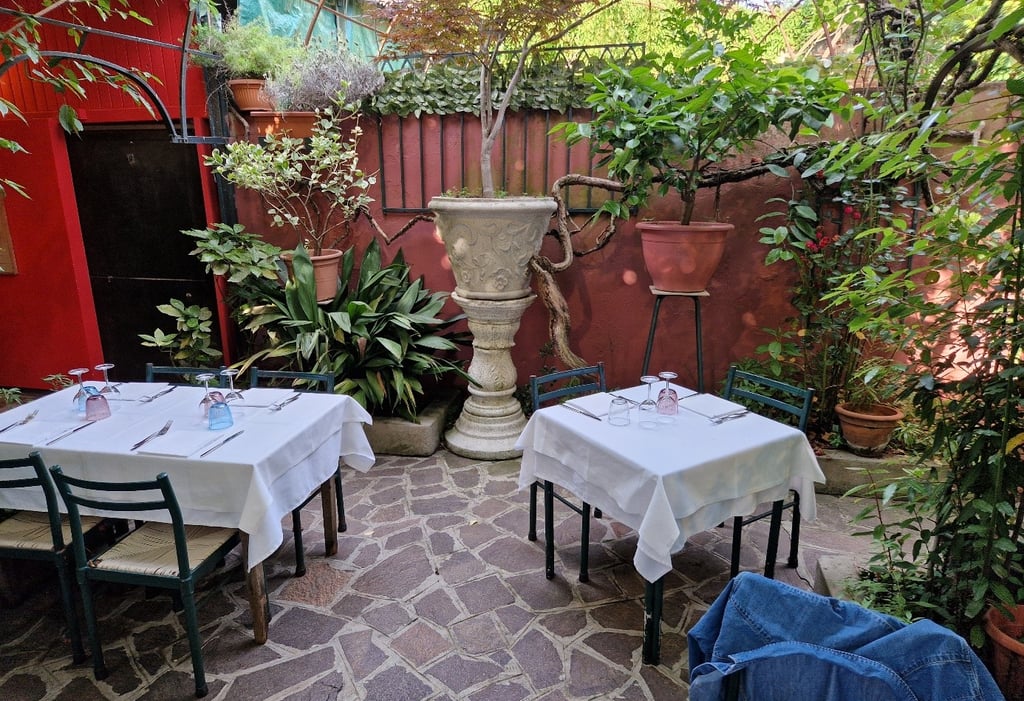

Pepe Roncino
Don't fall asleep before the end of the Racconcino !
Tintoretta
No, of course ! I have been waiting for this since this morning !
Come on, il Racconcino 1 !
Pepe Roncino
According to a legend, seven sisters lived in the Maravegie palace : six beautiful ones and an ugly one who was the youngest.
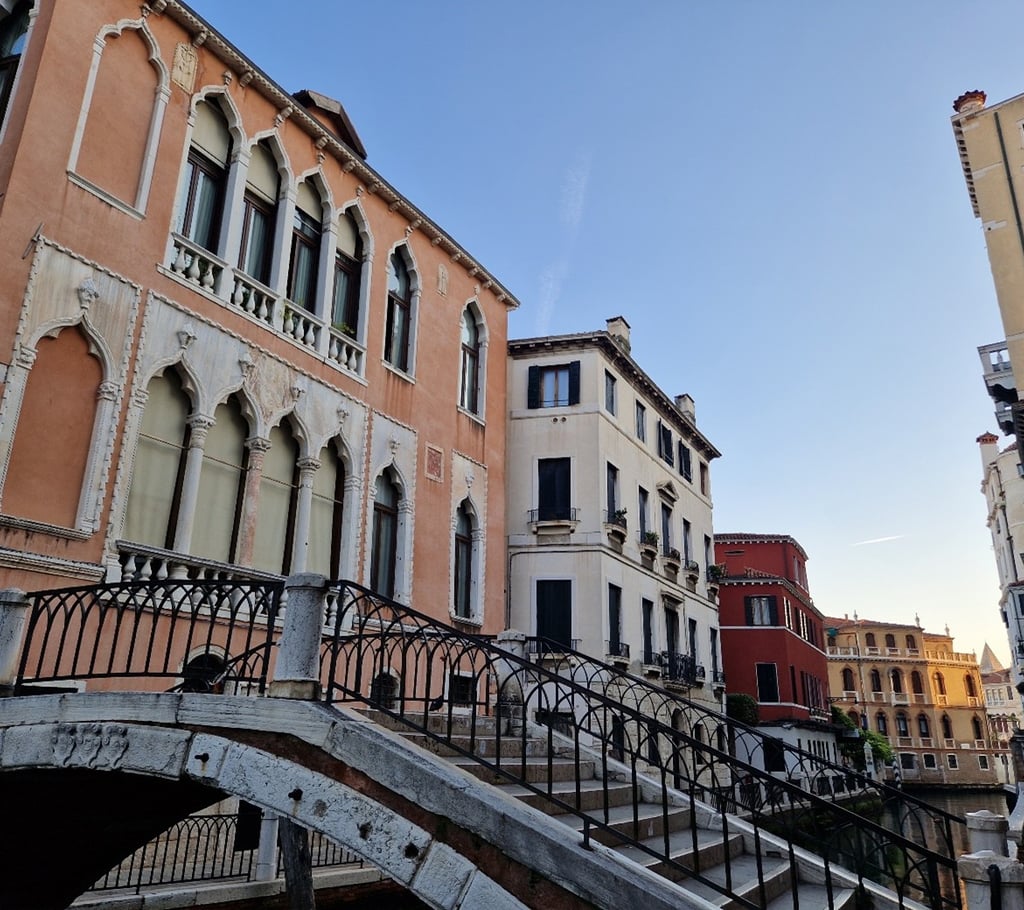

A young barcaiolo, a boatman who rowed along the canals and took part in regattas, began visiting the palace. He courted the six beautiful young women. But although he had been strong and healthy, he became weak and sickly, to the point where he didn't have enough strength to take part in the regattas. He believed he had been bewitched and his suspicions turned towards the ugly sister, Marina, who would run away as soon as she saw him. He wanted to break the spell and took advantage of Good Friday when the parents and the six beautiful girls had gone out to visit the graves. He approached the palace but overtook by fear at the thought of what he was going to do, he stopped a few minutes on the bridge. That's when he saw, through a window of the palace, the one he considered, kneeling before a crucifix ; at the same moment, lifting his eyes to the sky, he noticed six shining stars, arranged in the shape of a chariot with wheels and a tiller, and a seventh stare, smaller and dimmer. Little by little, however, the six stars lost their splendor, while the seventh became even brighter, until the others vanished and only it remained in the sky. This vision seemed to reflect the barcaiolo's situation so clearly that he was shaken. His violents thoughts disappeared but he rushed into the palace to speak to Marina. He asked her if it was true that she had made him ill and wanted him dead.
She burst into tears and confessed the love that she felt for him deep within her heart. She also told him that she had been praying to God to let her die in his place. The barcaiolo was moved by her words. He no longer saw this seventh sister as a ugly girl but as an endearing person. He began to pay attention to her and Marina, seeing that he looked at her with kindness, stopped avoiding him. Little by little, a new feeling took root in him. At the same time, his health improved ; he regained his strength. One night, unable to sleep, he took his boat and went under the bridge. He saw Marina at her window gazing at the sky. He followed her gaze and saw two shining stars. He understood that the second star was his and that it had joined Marina's.
Tintoretta
What a beautiful story !
Pepe Roncino
Good night, my Tintoretta !
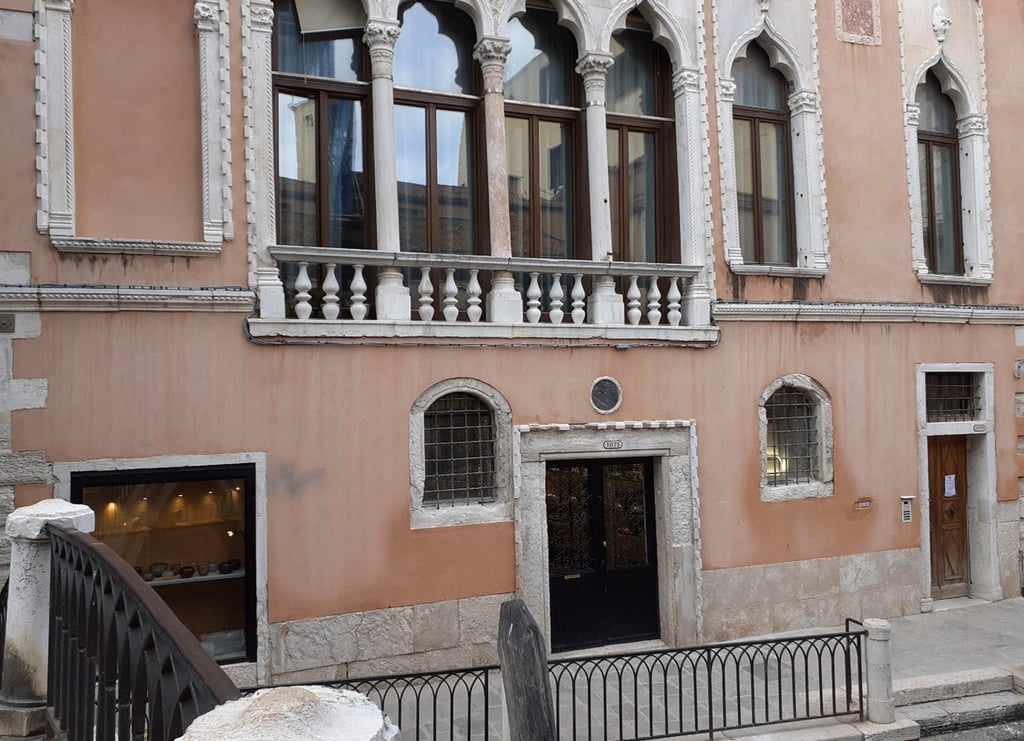

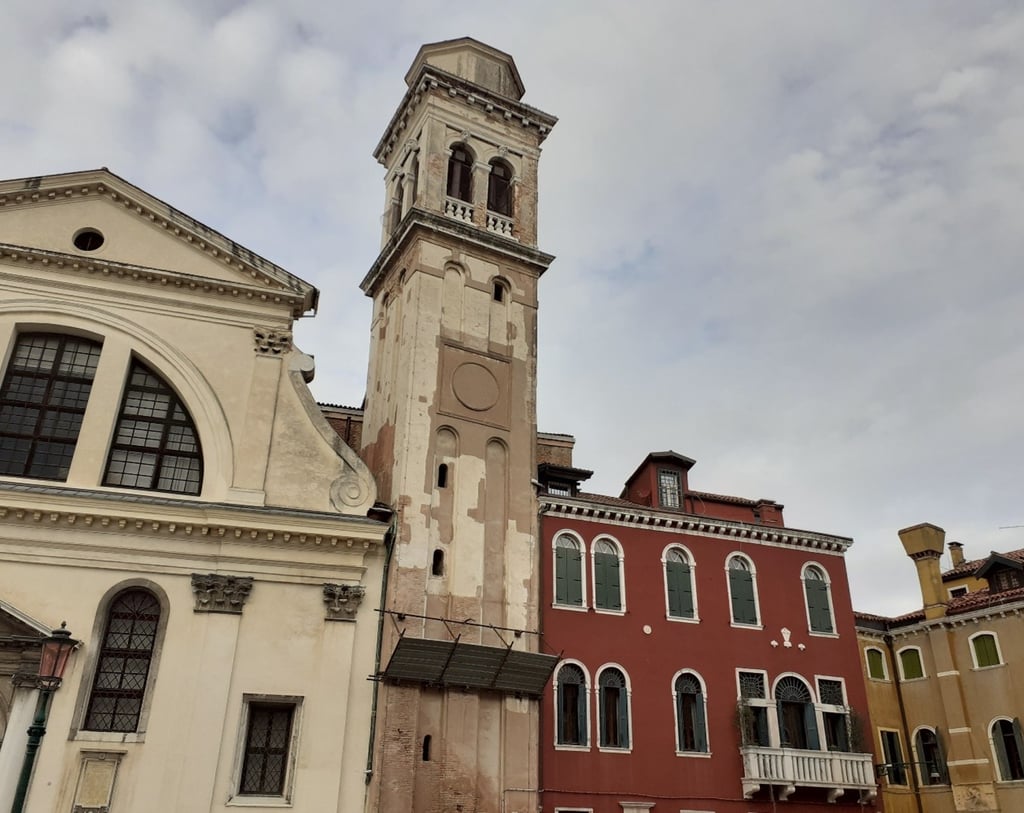

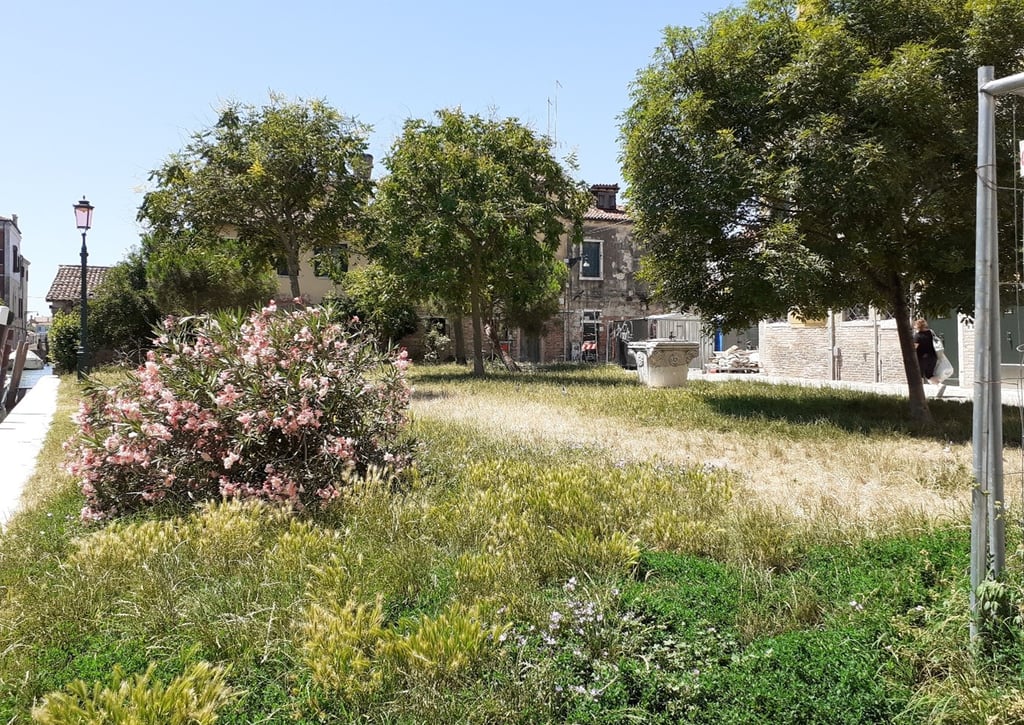


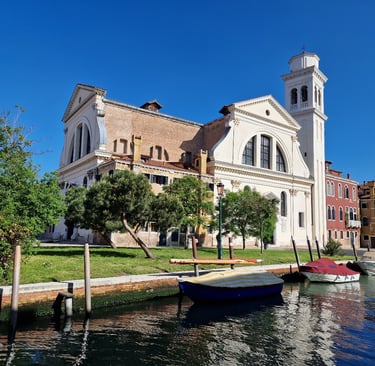
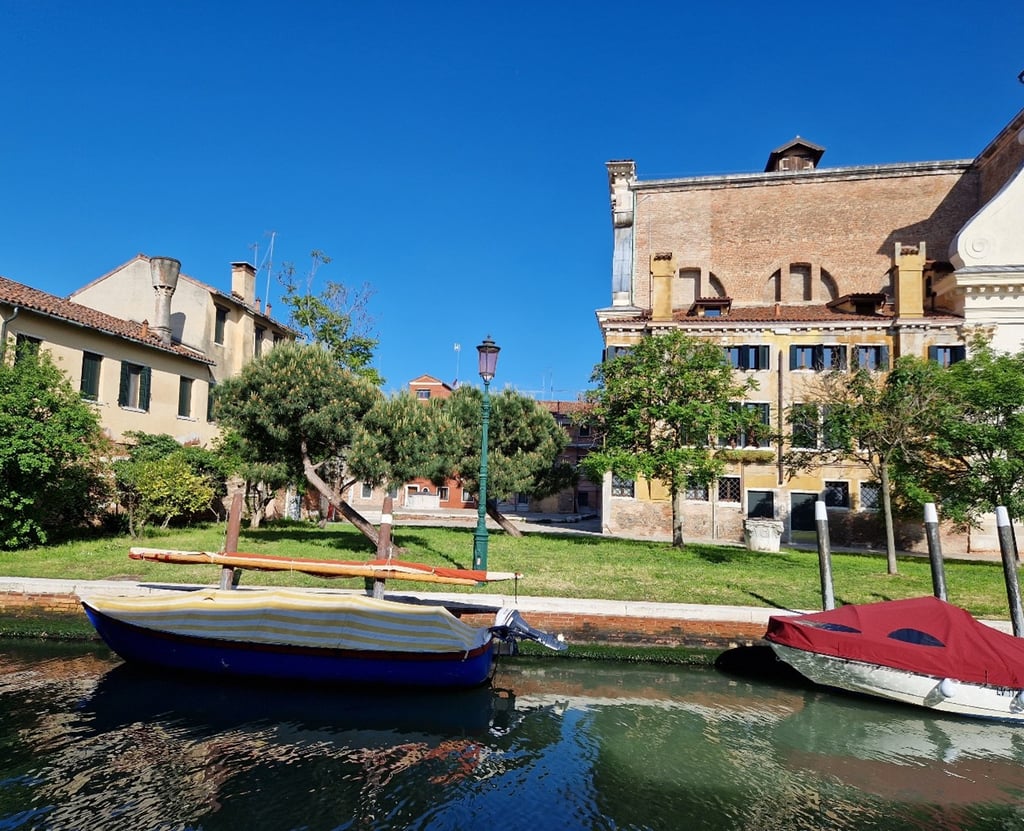

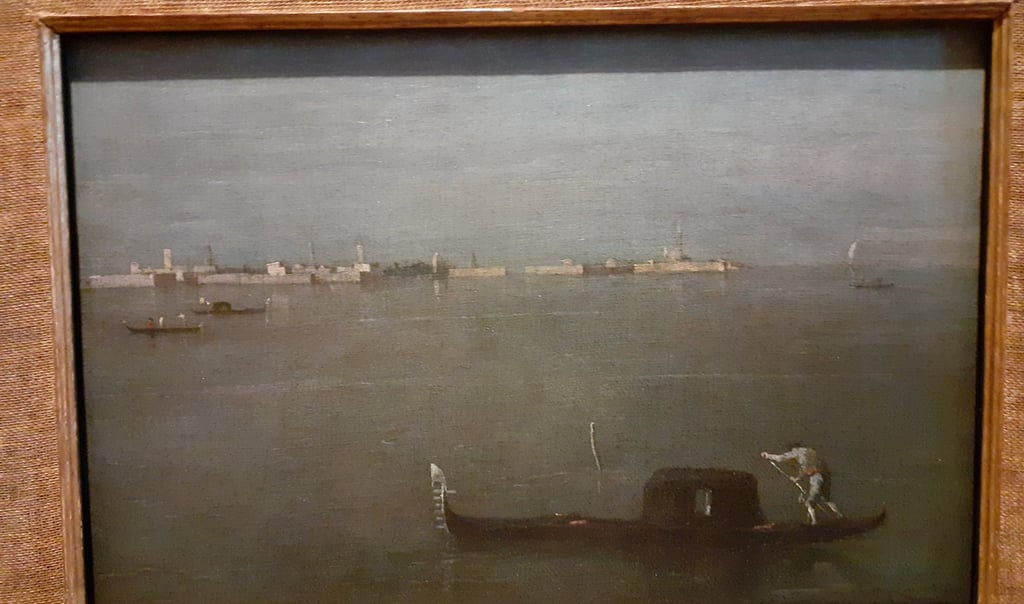

Francesco Guardi, Gondole sulla laguna, museo Poldi Pezzoli
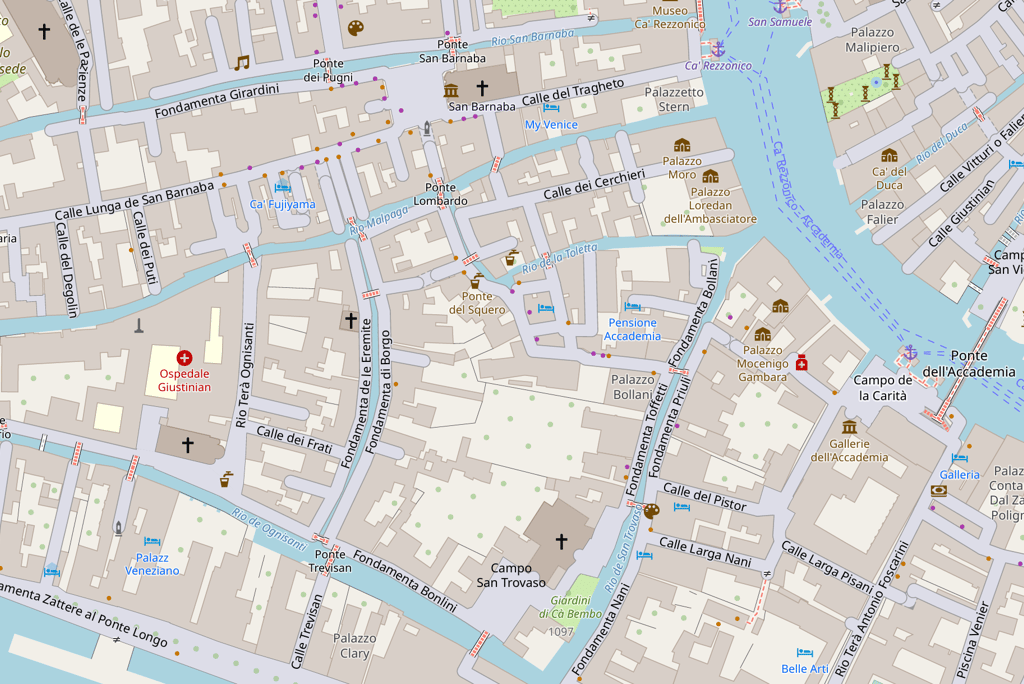

Explore
Discover the beauty of Venice's enchanting islets.
Journey
Culture
© 2025. All rights reserved.
